Kia Carnival review and buyer’s guide
The Kia Carnival is the best possible family vehicle for you if you have lots of kids, especially twins or even triplets. Carnival is a smart, luxurious and highly practical workhorse that also offers excellent value, good fuel economy and modern safety.
The Kia Carnival is the ultimate family transport vehicle which is so good at completing those typical routine tasks a growing family needs, you’re forgiven for falling a bit in love with it.
You could be one of thousands of families out there squashing, cramping and folding themselves into their fashionable seven-seat SUV, when they should be using a Carnival for moving their three or more kids (and their gear) around with ease - and style.
The Kia Carnival is better than an SUV, for most people, and in this report we’re going to explore exactly why. You can download the 2026 Kia Carnival spec sheet here >>
There aren’t many vehicles as capable and affordable as a Carnival, but you’ll want to compare it with vehicles like the Hyundai Palisade (8-seater, large SUV), or the Hyundai Staria (people mover on a van platform). But if you’re also considering a 7-seat SUV, you’ll want to research the Hyundai Santa Fe and Kia Sorento, as well as the Mazda CX-90 and Toyota Kluger to get an idea of how good the value is with Carnival.
In the context of what this vehicle claims to be, it’s a very faithful execution indeed. Except for one thing - this time around, the fourth Carnival, Kia has actually made it look pretty sexy. Something many of its potential customers probably don’t feel these days, folding endless washing and mashing potatoes en masse.
Download the PODCAST for this report
There are three powertrains in Kia Carnival, a very old, thirsty V6 petrol, a torquey 2.2-litre turbo-diesel, and now a frugal 1.6-litre turbo-petrol hybrid, giving you plenty of choice as to which is going to suit you and your driving best.
There are also four model grades with pricing ranging from about $56,000 to $82,000 - about the same as most seven-seat SUVs these days. So it’s not like you’re going to be forced into paying some substantial amount more just to make your life easier. This is not the case. Carnival is quite reasonably priced - we’ll get to that.
Carnival is not perfect, because no car is, so the purpose for bringing you the negatives, as well as the positives, is because this aims to be a balanced report that legitimises the good with the bad. The things you might not ultimately like about the Carnival need to be considered against the overwhelming advantages of living with it - before you spend the big bucks.
So what is the primary motivation for considering a Carnival over a seven-seat SUV?
Carnival is objectively better than an SUV in so many important ways - like accommodation, access, luggage space, versatility and convenience. Frankly, a lot of people who buy a typical seven-seat SUV would actually be better off in a Carnival - if for nothing else than to make for a more fuss-free day-to-day process.
Getting in and out, finding space for various stuff, minimising self-inflicted wear and tear on your new vehicle. Carnival is all about simplifying the complexities of your daily, weekly routine.
There’s a lot more to love than to dislike about this vehicle, and none of the ‘con’ items should be a deal-breaker for you, because they’re nuances, as opposed to outright inadequacies in design or execution.
Will the Kia Carnival fit in your garage? If you can house a LandCruiser or Prado, a Mitsubishi Pajero Sport or Mazda CX-9 (and so on), then you can fit a Carnival.
Don’t make up excuses about it being too big, because it’s not. Especially when it comes to parking. Those sliding doors make getting in and out of tight spaces categorically a breeze - profoundly easier than any other the conventionally hinged-door SUVs or off-road wagons.
Length: 5155mm | Width: 1995mm | Height (incl. roofrails) 1775mm | Wheelbase: 3090mm | Ground clearance: 172mm | Kerb weight: 2136kg (petrol), 2134kg (diesel) | Gross vehicle mass (GVM): 2880kg (petrol), 2876kg (diesel).
Tyres: 235/65 R17 (S, petrol/diesel), 235/60 R18 (Sport, Sport+ petrol/diesel), 235/55 R19 (GT-Line petrol/diesel) | Spare: Temporary space saver | Turning circle: 11.7 metres.
The hybrid Carnival is here for 2026…
It’s finally the time for one of Kia’s last combustion-only models (here in Australia) to go hybrid. The Carnival from late 2025 will be available with a hybrid powertrain, the ubiquitous 1.6-L turbocharged petrol 4-cylinder with a 54kW AC electric motor.
The big question is, which probably has the answer you’re expecting, whether the 2.2-litre diesel powertrain will get replaced entirely by the hybrid - or will it stay - long term?
Odds are that it might be replaced in time because the new Tasman needs all those diesel engines so Kia can maintain its average corporate emissions targets across its models.
Guaranteed, that ancient 3.6-litre petrol V6 is getting deleted at some point, so Carnival might even simply go to the sole hybrid powertrain and ditch both the diesel and petrol-only powertrains. That’s less likely though.
It’s also worth noting that Kia does seem to be holding onto its diesel-powered model range: Sportage, Sorento, Tasman (obviously), Carnival - as opposed to Hyundai which has ditched diesel entirely, even on the bigger new Palisade.
The good part about this change in the air is that the Hyundai-Kia hybrid powertrain has been very well received and executed in the likes of Hyundai Santa Fe and Tucson, Kia Sportage.
The Carnival will benefit from having those 180 instantaneous kilowatts and 367Nm of torque available from zero-to-low revs for mums and dads constantly getting up to speed and slowing down for the next set of lights doing school drop-offs and commuting.
What remains to be seen is how well the front-driven Carnival handles the torque delivery to the two front tyres and counterbalanced by the potential 6 kids in the back, enormous double prams and all the luggage. Up until now the diesel has been very smooth and adequately torquey for pretty much any driving situation.
Carnival diesel has also been a stealthy little weapon in terms of also offering decent light-moderate towing capability, which is most likely going to be reduced in the manner of Santa Fe. It also has that lauded covert-van functionality hiding in plain sight, waiting for you to drop the rear seats.
But overall, Carnival hybrid will not be a step backwards (how could it?). If there’s one suburban family transporter in desperate need of hybridisation and the inherent advantages it brings, it’s the Kia Carnival.
So it might behove you to wait another six months if you want the latest Carnival with the comparable fuel economy benefits of hybrid, or act fast if you want to secure what could be some of the last diesel Carnivals. If you’re in the latter camp, keep reading to see how the Carnival is going to work for you.
FEATURES & PRICING
Consider that the Kia Sorento, the Mazda CX-70 or the Toyota Kluger are all potentially $75,000 vehicles these days. In this context, the Kia Carnival offers impeccable value given that it has better daily functionality - something you’ll benefit from every single time you use the vehicle.
Then you check out what the base model offers and it starts to make perfect sense why it’s the best-selling people mover in Australia, by a significant margin. Carnival, you could argue, has even killed off the Honda Odyssey, or at least helped it walk the plank.
Let’s see what you get for your money and then what features you absolutely must have, or which ones you could afford, depending on your respective financial situation.
Carnival ‘S’
$56,500 for the V6 petrol (driveaway approx.)
$58,700 for the diesel (driveaway approx.)
$61,500 for the hybrid (driveaway approx.)
Standard features include:
17-inch alloys (space-saver spare), cloth seats w/ manual adjustment (6 ways driver, 4 ways pass.)
LED: headlights (auto dusk-sensing; escort function), daytime running lights and rear brake lights; auto high beam
Front & rear parking sensors, power folding & heated door mirrors, folding key remote (incl. keyless entry & tailgate release)
Adaptive cruise control, lane keeping, auto emergency braking, rear cross-traffic alert & collision avoidance
Curtain airbags in rows 2 & 3; driver knee airbag; safe exit warning
5 x ISOFix child restraint anchor points (w/ 5 top tether anchor points to match); maximum 8-seat capacity
6-speakers stereo system, 8-inch touchscreen, wireless Apple CarPlay & Android Auto
Driver & front passenger sunvisor extensions, row 2 & 3 AC vents
The sheer number of features makes Carnival S one of the most exciting base models of any vehicle you can buy today. The inherent functionality that’s baked into the DNA of Carnival makes the poverty pack absolutely fantastic value.
And it doesn’t look like the base model either. The black rims look gangster and the chunkier sidewall tyres just add toughness to the overall appeal, the grille gets that little twinkle of silvery trim, and the cloth interior isn’t half bad.
Seats themselves are unnecessarily comfy over long journeys (they didn’t have to be as accommodating for bigger and smaller body sizes, and yet are), and there’s more than enough legroom for every seating position, regardless of height. Even if you’re Stephen Merchant you’re going to appreciate being able to stretch without elbowing your passenger in the temple.
Carnival ‘Sport’
$62,600 for the V6 petrol (driveaway approx.)
$64,800 for the diesel (driveaway approx.)
Features added include:
18-inch alloy wheels (space-saver spare)
Front parking sensors, full LED taillights, auto window defog, ‘aero-blade’ windscreen wipers
leather steering wheel & transmission shifter knob
DAB radio + 8-speakers stereo system, satnav w/ 10 years traffic map updates
12.3-inch touchscreen w/ “Sounds of Nature” ambient audio
Wired Apple CarPlay & Android Auto (that’s not a typo - it’s a long story)
Dual-zone climate control (front), single-zone rear climate control
Carnival ‘Sport+’
$68,950 for the V6 petrol (driveaway approx.)
$71,140 for the diesel (driveaway approx.)
$74,250 for the hybrid (driveaway approx.)
Features added include:
360-degree camera, LED front fog lights, premium auto-dimming rearview mirror,
Rear cross-traffic collision avoidance (auto braking), safe exit assist (automatically locks side doors when traffic approaches),
Proximity smartkey W push-button start, remote engine start, 2 x row 3 USB charging
Leather seats, 10-way electric driver’s seat (incl. 2-way lumbar support)
Electric sliding doors (row 2), smart electric tailgate w/ auto-close; both sliding doors & tailgate get push-button closing as well
Acoustic windscreen treatment, rear window privacy glass (rows 2 & 3), auto rain-sensing wipers, 4 x auto-down windows (front & rear)
Carnival ‘GT-Line Lite’
$72,800 for the V6 petrol (driveaway approx.)
$75,000 for the diesel (driveaway approx.)
Features added include:
19-inch black alloy wheels (space saver spare)
4-way manual front passenger seat, 10-way electric driver's seat incl. 2-way lumbar support
Matte chrome painted skid plate (front & rear), body coloured door handles with chrome accents, acoustic windscreen treatment
Power windows (1st & 2nd Row) with auto up/down + driver's side safety function
LED cabin lights (all rows), LED cargo lamp
3rd row USB chargers (2 x side panel), luggage net,
Carnival ‘GT-Line’
$77,140 for the V6 petrol (driveaway approx.)
$79,300 for the diesel (driveaway approx.)
$82,900 for the hybrid (driveaway approx.)
Features added include:
19-inch black alloy wheels (space saver spare)
Transmission rotary dial selector, paddle-shifters
Smart driver temperature control, heated & ventilated (cooled) front seats + heated rear seats (outboard row 2 only), heated steering wheel
12-speaker BOSE premium sound system (incl. 8-speakers, 2-tweeters, centre speaker + subwoofer’ incl. BOSE Centerpoint® surround-sound), in-cabin dynamic speed-sensitive volume control
Wireless phone charging, head-up display
Dual front LED projector headlights, LED interior lights (all 3 rows), LED cargo lamp
Sunshade blinds (2nd & 3rd Row), puddle lamps, 3D interior mood lighting (1st & 2nd row)
4.2-inch driver’s display screen, rear occupant alert with sensor, luggage net
Dual sunroof (front: tilt & sliding; rear: sliding only)
12-way electric driver’s seat incl. 4-way lumbar support, integrated seat memory w/ 2 x seating positions, 8-way electric front passenger seat
DRIVING
What’s going to surprise you first and foremost about getting behind the wheel of a Carnival (if you’re a first-timer) is just how plush, smooth and comfortable it feels - at any speed and on almost any sealed road.
The ride is not supposed to be as effortless as it is on particularly rippled and broken suburban roads. It’s not exactly a Rolls-Royce, but the way it recovers quickly from heavier hits when you hit a moderately deep undlation is nice.
The steering is light and direct, with enough feel to braille your way around a tight shopping centre carpark and avoid kerbs, while also being slick enough that you can twirl it with confidence in a hurry and not overcook the angle you need to reverse park.
Threading it through traffic, it’s impressively nimble and once you have a feel for how much space you have on either side, it doesn’t feel anywhere as cumbersome as a big 7-seat 4X4 can feel when you’re boxed in on all sides by trucks and vans.
If you have short arms, you might find it a bit of a stretch reaching the far-left icons on the ultra wide screen, but this isn’t going to be the case for 90 per cent of people. But what even the last 10 per cent will appreciate is the powertrain.
Hoenstly, the way Kia has executed the hybrid Carnival is phenomenally good in terms of applying the power. It’s got punch, and it tends to come on quite smoothly and transitions to the combustion engine with no jolts or roughness - and no hesitation or interruption of the power delivery. It’s certainly a better engagement than Toyota’s, or at least on par.
A quirk some might find is that getting on the throttle, letting off again soon after and then re-applying throttle can leave the transmission trying to figure out which gear to be in, but only for the briefest of seconds. Most people will probably never notice.
Performing quick three-point turns in the combustion variants can be dealt with fairly easily because you get to the flick the rotary transmission selector or slide the T-bar stylle selector in lower grades. Piece of cake.
Doing it in the hybrid takes a little more finesse, without being what you’d call demanding. Using the stalk mounted at about 4-o’clock on the steering column, you twist it thumb-forward for ‘Drive’ or thumb-backwardsb for ‘Reverse’. What might get a bit demanding of the digits on your right hand is if you need to also get the indicator happening to flag other motorists.
Once you get a handle on the steering-column stalk - and you will leanr to adpat fairly quickly - it becomes a very practical piece of equipment that clears the centre console for space to put all the small things: keys, phones, snacks, cords, pock fluff etc. You might even appreciate the transmission stalk for its robustness - it looks like it should snap off, but it’s not.
When you are driving through corners, the low floor in rows 2 and especially in 3 means any shopping bags or general items of value are not as prone to be thrown around as the Carnival changes direction. This is in comparison to 7-seat SUVs which tend you have a fairly high boot floor, meaning any items in it can tip and sway thanks to their higher relative centre of gravity.
In terms of driving refinement, the 2.2L diesel remains the best value, certainly for outright price and balancing ongoing fuel economy and performance.
With driveaway pricing now confirmed for Australia, the idea of paying more for the hybrid to be better than the diesel on fuel economy is a tall order for the former, primarily because diesel is more energy dense. So the battery-motor combination has to fill in the low-RPM power delivery of the diesel. And it gets pretty close to doing that.
The hybrid (and the diesel) are far more economical than the V6. But the hybrid is $3600 more than the diesel, so it will be worth getting if you do lots of city commuting and stop-start driving in the suburbs where there’s lots of opportunity to recharge the battery (under brakes and coasting) in order to use that energy to get going again. This has long been the case for Toyota hybrids as well.
The price of diesel remains competitive to petrol here in Australia, so there’s not much of an advantage in that area to having the hybrid. So if you do primarily stop-start traffic and metropolitan city-based driving, in order to make up the additional $3000+, you’re likely to eventually break even with the hybrid over the diesel in a few years’ time.
This is the same dilemma as other hybrid vehicles like Toyota Kluger and Kia Sorento, and the Toyota RAV4 and Kia Sportage face. If the hybrid costs more than the nearest combustion vehicle, then it will take several years before you save enough on fuel to break even. But there’s no disadvantage to getting either. They both compliment this platform quite well.
Actually driving the Carnival hybrid is the same ubiquitous hybrid powertrain we’ve seen Hyundai implement in the Kona, Santa Fe and Tucson. Particularly in the larger Santa Fe the hybrid has replaced its 2.2 diesel, and that battery and motor are very actively engaged in the low-RPM driving conditions where the diesel did its best work.
Hyundai and Kia’s engineers have taken the standing-start benefits of electric powertrains and used it to mimic, rather effectively it must be said, the low-RPM grunt that you get with a modern turbo-diesel engine. Meaning the battery, which is storing energy captured from the brakes, to get the vehicle going from standstill, which is the most energy-intensive part of driving - getting going.
SAFETY
The Kia Carnival earned a five star safety rating from ANCAP, back in 2021, which is quite recent despite protocols being updated, but not necessarily easier to understand.
Carnival is a five-star vehicle, and it is among the safest vehicles you can buy today. If you want a second and more thorough safety assessment of the Carnival, you can check out the report from the IIHS here >>
If you’re unfamiliar with AutoExpert’s position on ANCAP in recent times, essentially they lack the competence in developing a straight-forward, easily digestible rating system for average consumers.
This wouldn’t be so bad if ANCAP wasn’t taxpayer funded, meaning their inadequacy to provide cogent safety ratings is costing the public in two ways: we don’t get the safety data needed from their service, and we’re being stung for the bill. And nobody else wants to pull them up for it.
So, because ANCAP is somewhat compromised in this regard, here’s a quick overview of how Carnival performed and where it went right and wrong.
Frontal offset & mobile barrier tests
Essentially, these are the two most common crash scenarios you’re probably going to be involved in in a crash, if you’re that unfortunate, of course. Touch wood.
Carnival performed extremely well. The standard dual front and side head-protecting airbags in all three rows, and the side chest-protecting airbags in the first row, plus driver’s knee airbag are all the stars of the show here. Sadly, Carnival misses out on the front-centre airbag which was given to Santa Fe and Sorento, which is disappointing.
Scores in these tests were very good. Overall, Carnival scored 90 per cent (34.5 out of 38 points) for keeping mum and dad alive up the front.
Pole test
Only minor penalties for ‘adequate’ front leg protection, ‘adequate’ neck and chest protection for a rear passenger in the full-width crash test, and some rear passenger intrusion on the opposite side of the vehicle (during the ‘oblique pole’ test).
This last test, ‘oblique pole’, is a particularly nasty test which, at 32km/h, slams the vehicle’s spine into an unyielding, (essentially) immovable object. Just watching the slo-mo replay hurts somehow.
Carnival received full marks (6/6) in this test, while Sorento scored a hair-splitting 5.7/6 the year prior, and the current-platform Hyundai Santa Fe got 5.3.
Carnival got 88 per cent (43.52 out of 49 points) for protecting the kids in the back.
ANCAP’S CRASH TEST FAIL
But of course, it wouldn’t be ANCAP without a glaring omission in its assessment of this vehicle. While the technical report mentions row 3 ISOFIX and top tether seating arrangements, the actual performance of row 3 for protecting children back there wasn’t measured. Not a single anthropomorphic test device was placed in row 3 and assessed for head protection, even in the most severe crash tests. That’s because ANCAP is focused on ‘driver assist’ tech (nobody asked for) rather than adopting a policy that tests row 3 safety.
This is a largely taxpayer funded organisation with heavy government representation on its board, and it’s very disappointing that not a single engineer or middle-management suit thought to put a dummy in the third row of a ‘people mover’ to see how well it performed at protecting people being moved in it. How innovative.
Honestly.
The IIHS reports that the Carnival, while overall quite safe, is vulnerable to the growing size and weight of the modern-day ambient vehicle fleet in society. See, the IIHS uses a mobile trolley that is taller and heavier than the car-sized 1400kg trolley used by ANCAP and EuroNCAP in their testing, travelling at 50km/h.
So when the IIHS crashed their 1900kg SUV-sized trolley into Carnival at 60km/h, back in 2022 and 2023 respectively, some interesting results came out. Just quickly before we do that, in the first round of Carnival side impact testing, the vehicle got ‘good’ scores on all the critical areas on the dummies.
But in the later, updated and more stringent 2024 tests (with lower permitted deformations and lesser kinetic loads measured in the dummies) something happened in the first of two side impact tests:
the left second-row captain's chair became detached from the floorpan, causing both the seat and the rear passenger dummy to tip inboard and rearward, coming to rest on their sides in the rear cargo area.
Now, initially you might conclude then that this makes Carnival an absolute deathtrap in terms of its safety credntials and strike it off your shortlist. But hold on a moment:
While this seat separation did not appear to exacerbate any injury measures recorded by the rear dummy, such separations should not occur.
So it’s not necessarily an outright disaster. In fact, it should prove to you that Kia did not just take the data and hope nobody noticed in the public or in the crash testing institute. They resorted to fixing it:
The rear seat detachment led Kia to modify the rear left and right seat rails to prevent this occurrence with models built after August 2023, and Kia has implemented a product improvement campaign to apply the same fix to models built earlier.
It’s hard to explain just how impressive it is that a carmaker, full of corporate priorities and agendas, would resolve to fix an issue like that when in fact their safety rating results from making such a an investment in re-design would not yield a better result.
Speculating of course, Kia most likely did this because the chance of such an event happening out there on the road, and tarnishing the brand’s growing safety and quality reputation, was too great. They didn’t have to do this, but they made the right pro-consumer choice, (even if the motivation was most likely financially and marketing related).
The results? They speak for themselves:
In the second test conducted by the Institute on a vehicle with the modifications, the rear seat did not become detached from the floorpan.
And in the original side impact testing with the 1500kg SUV trolley at 50km/h, the Carnival received ‘good’ scores in all areas. This is the difference between the two testing regimes, the earlier from 2022, the latter updated (and more stringent protocols) from 2023 onwards.
What’s important to understand here is that it’s not the impact with the vehicle’s internal structures that earned the ‘poor’ overall rating for Carnival because, in fact:
greasepaint shows where the rear passenger dummy's head was protected by the side airbag…
and
the driver dummy's head was protected from being hit by hard structures by the side airbags.
What saw Carnival deducted points was the:
forces from the intruding rear door were high enough to indicate an elevated risk of injury to the chest.
The explanation for this is the nature of the people mover design itself. The tall, wide sliding door sections have a lot of space between the main passenger cell structure like the A-pillar, B-pillar and C-pillar. These made up the primary structure designed to absorb the impact - the doors and panels are secondary.
The same kind of phenomena happened to the Hyundai Staria in similar tests. There is less chassis taking the hit, therefore more of the door panels themselves are pushed inward. And no, this doesn’t necessarily relegate people movers to the deathtrap pile. It just means being hit by a large SUV at 50km/h is better than being t-boned by the same vehicle at 60km/h.
The IIHS side impact is also located on the Carnival much higher up due to the nature of the trolley emulating an SUV, which is very common in both North America and Australia.
The same verdict can be applied to the ANCAP results: being hit side-on by a 1.4-tonne car, Carnival is emphatically safe.
FUNCTIONALITY
Many people who subjectively buy an SUV would be objectively better in a Kia Carnival, and this is why.
It can double as a furniture moving van, which increases its haulage envelope when you add a box trailer for moving house, taking rubbish to the tip, collecting firewood, or for pseudo grounds keeping work like mowing and brush cutting.
The joy of the new Carnival is that it’ll finish doing those trips back and forth full to the roof with dusty cardboard boxes, and then fit in during private school drop-offs among Range Rovers and Lexus RXs.
You will quickly fall in love with those massive dual sliding doors. You probably don’t usually consider yourself a driving enthusiast, typically, - not Monday to Friday at least - but you will enjoy using a Carnival’s long list of nooks and crannies and cubbyholes as much as you will driving it.
You can get as much enjoyment out of having somewhere to stow everything as you will enjoy actually weaving through suburbia in it, or even hitting the open road.
Access is a real halo feature on this Carnival. In fact, on Platinum and SLi, you can not only remotely open the tailgate from the key fob, and ditto one or both of those drive-by doors, you can access all areas simultaneously by pressing and holding the unlock button on the remote. All three doors open as if by freaking sorcery.
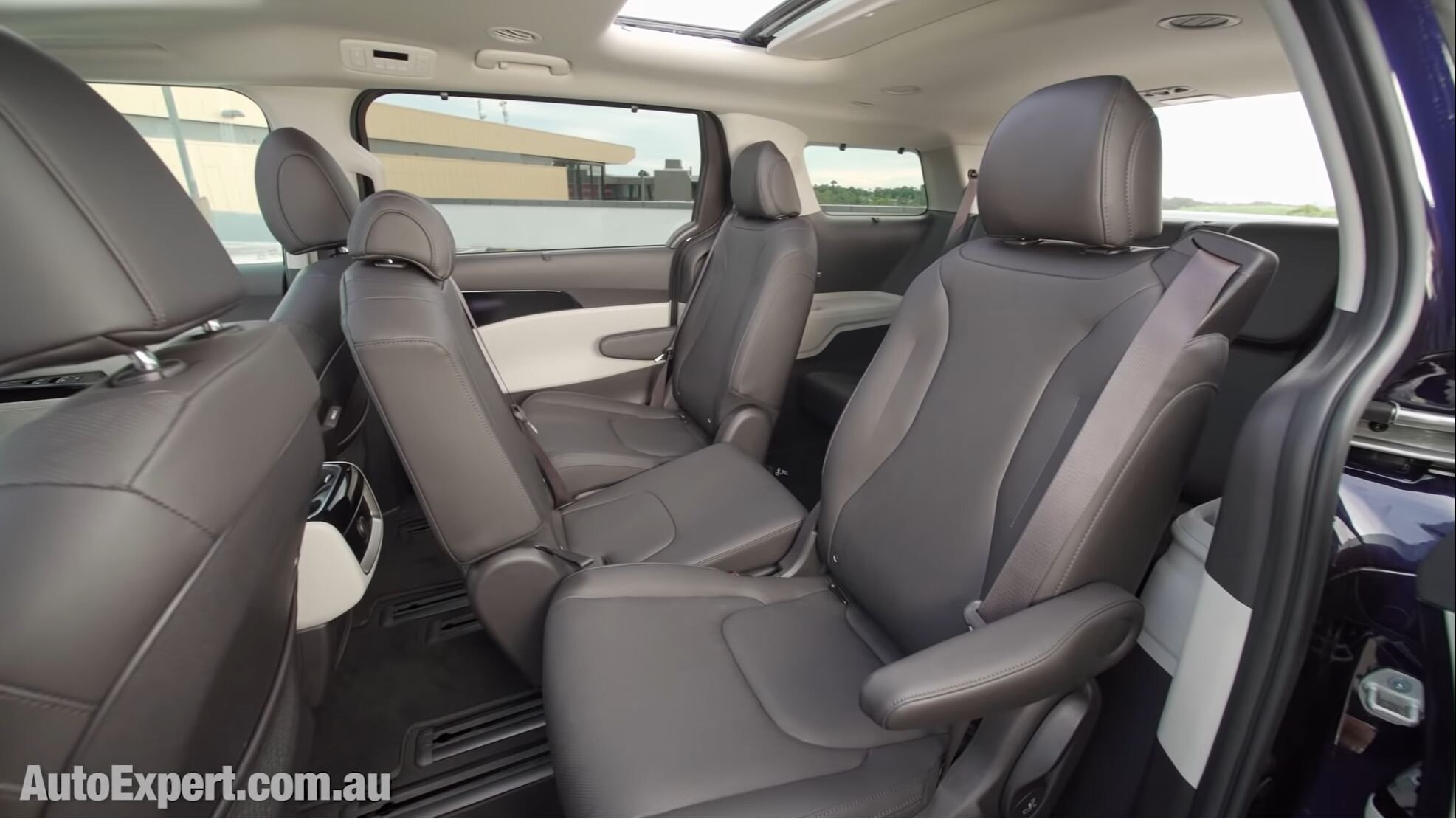
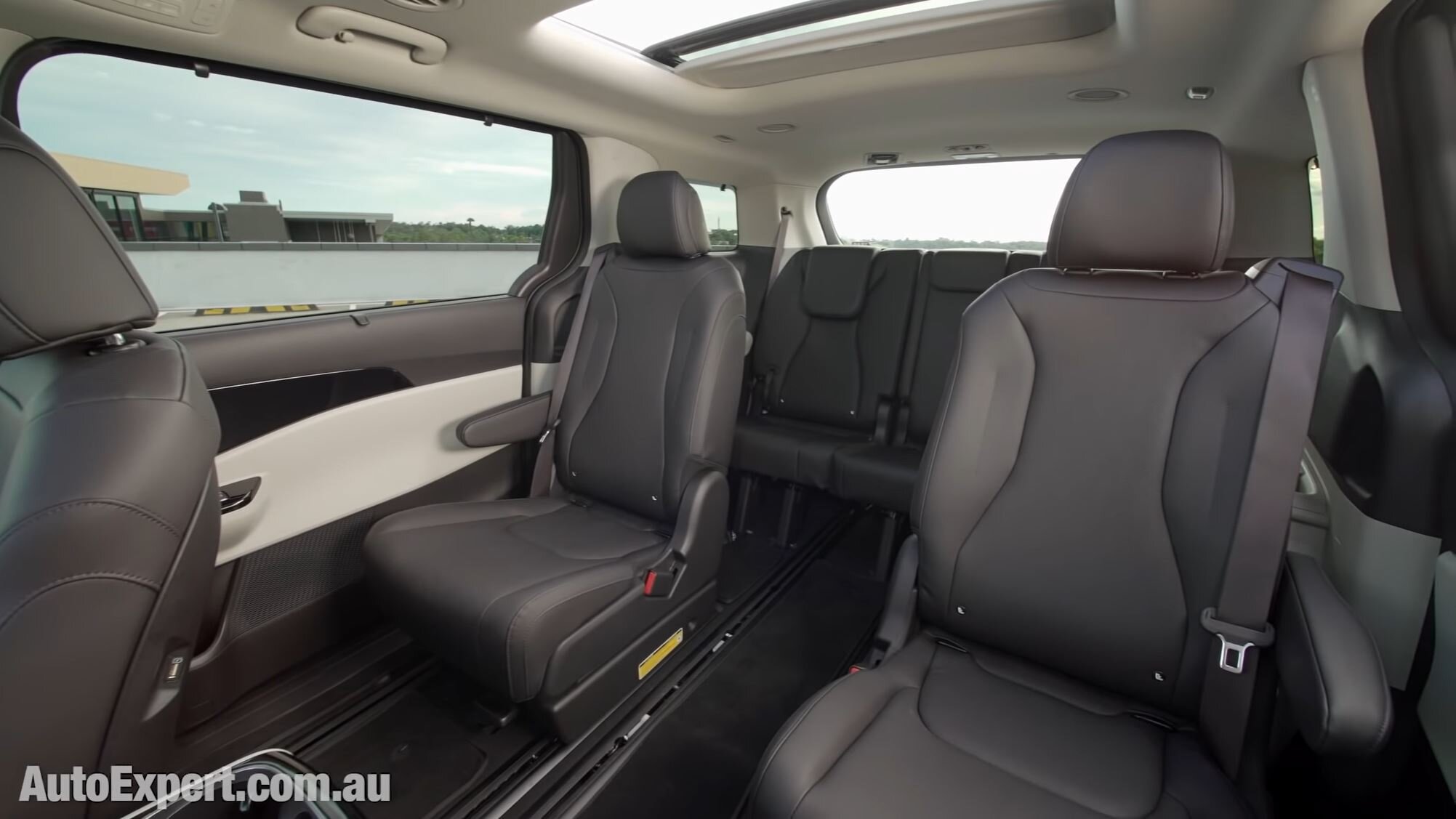
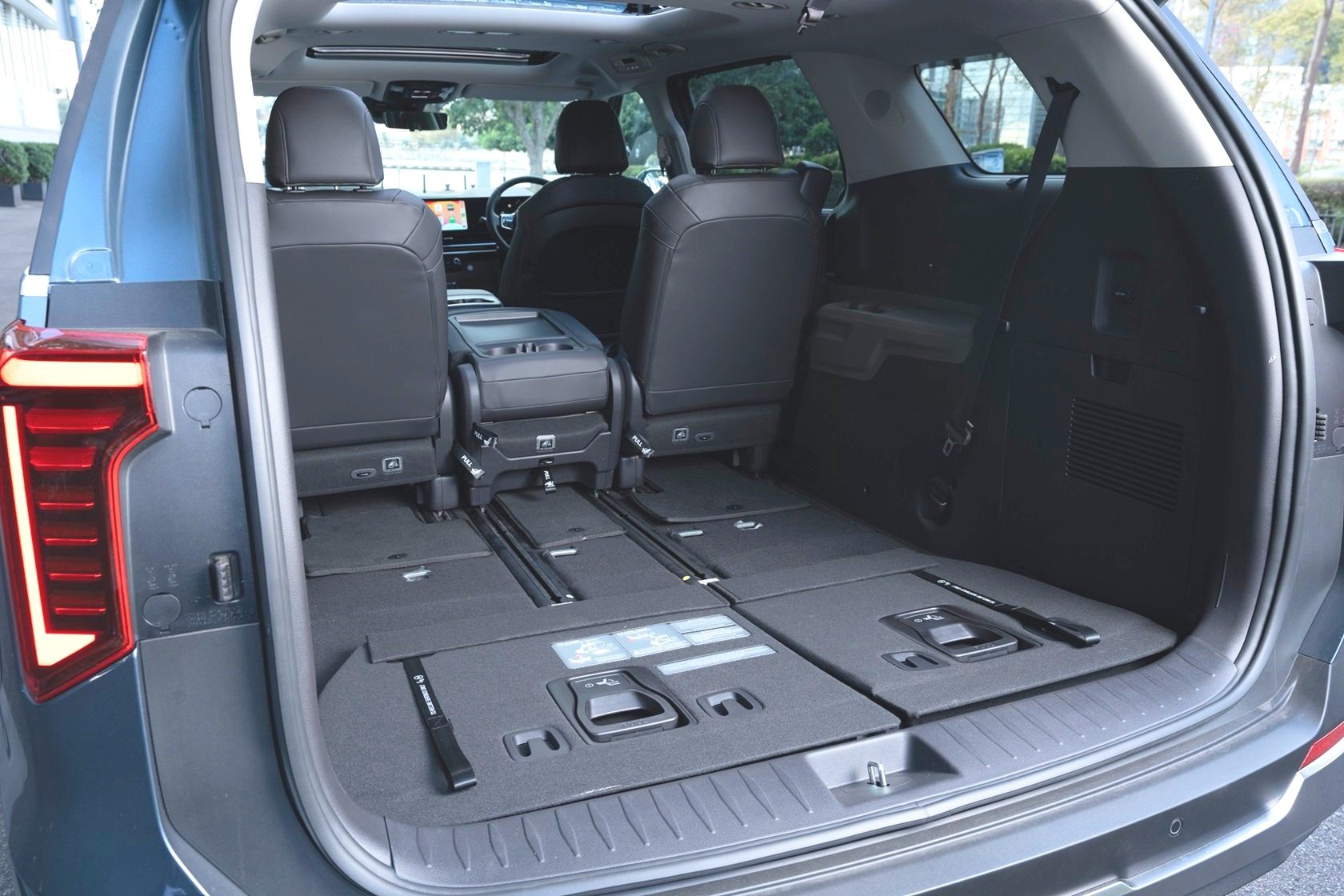
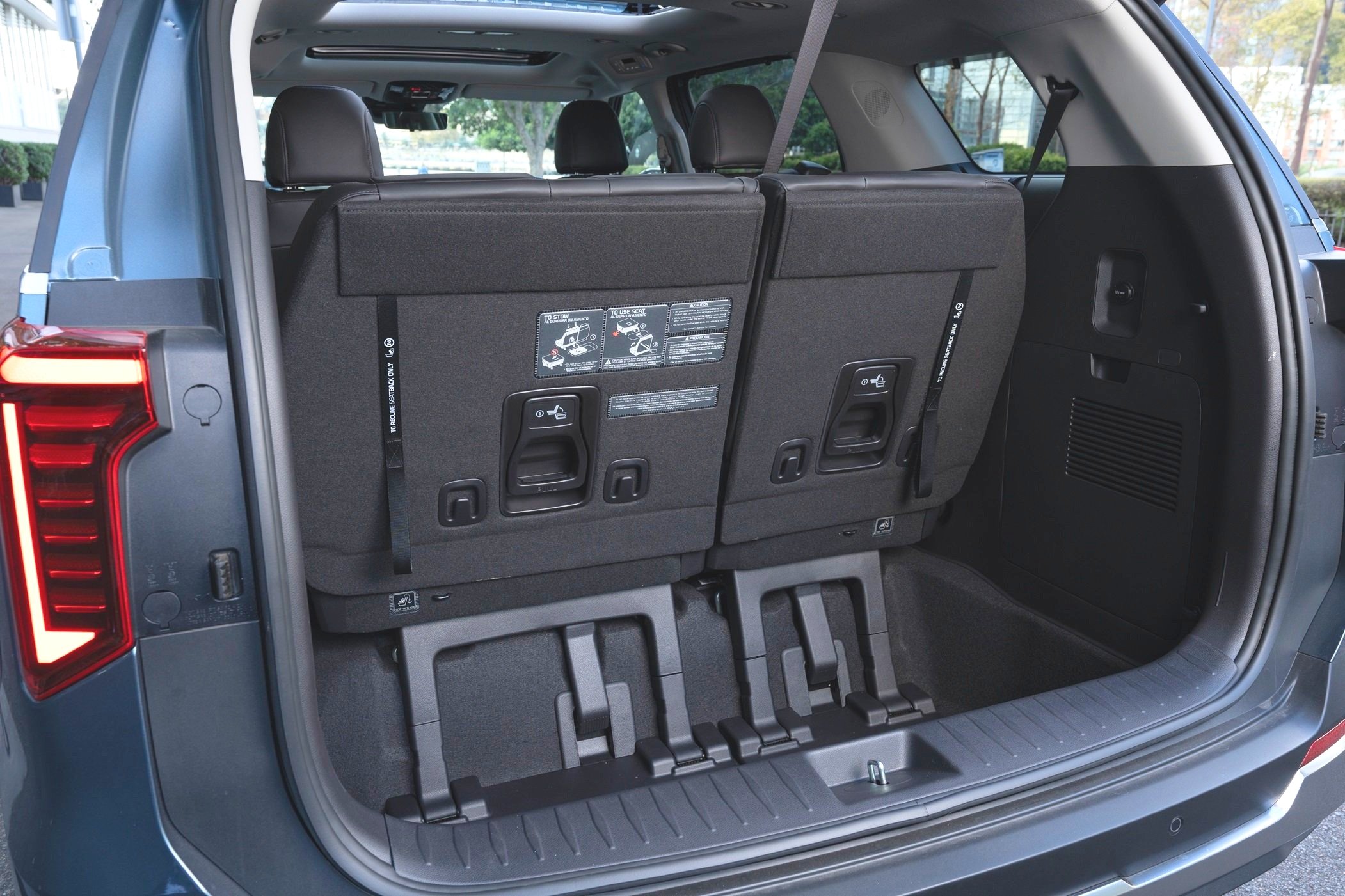
Simply press and hold the lock button and all glass goes up, the side doors slide shut and the tailgate closes.
Pro Tip: If this feature does not work for you right out of the box, do not walk into the dealership and demand a refund. It probably just hasn’t been enabled yet. Dive down into the infotainment system menu: Settings, Vehicle, Doors and tick the box and it’ll work.
Make friends with the infotainment system because there are loads of customisable options buried deep in the menus, with plenty of buttons to stimulate and set up your Carnival just the way you like it, which of course means, just the way they or she likes it.
You might like to make deactivating certain features part of your starting sequence.
In part, you’ll love the hands-free tailgate, which allows you to stand at the back of the car, hands full of kids, shopping etc. or in my case endless bags of camera gear, and the tailgate detects the key and voila. You don’t have to free your hands to open it.
And now some love for the enthusiastic breeders among you. You planned on three kids, filled out the spreadsheet, and then number three turned out to be triplets. But hey, isn’t nature wonderful?
You get five kiddy seat anchor points: Three in row 2, and two in row 3. And they’re all top tethers, and ISOFIX compatible. And those ISOFIX points in the seatbacks do not dig into the buttocks of regular-size humans when sitting on the seat.
And you’ll love that you can remove the centre seat of row 2 to allow walk-through access to row 3 for elderly grandparents, because it’s undignified for them to volt over the seats or strafe past the folded outboard row 2 seat like every other seven-seat SUV buyer. They don’t get to walk through, generally.
Only Santa Fe gets that feature now, however it comes at the cost of the centre seat entirely, whereby you actually pay more for less seats (the 6-seater version is in top-spec Calligraphy only), and it cannot go back in. With a Carnival, it can.
In seven-seat SUVs, buyers need to decouple child restraints or clumsily roll-and-fold forward the seats, and there’s still barely enough room for civilised human beings, way back there.
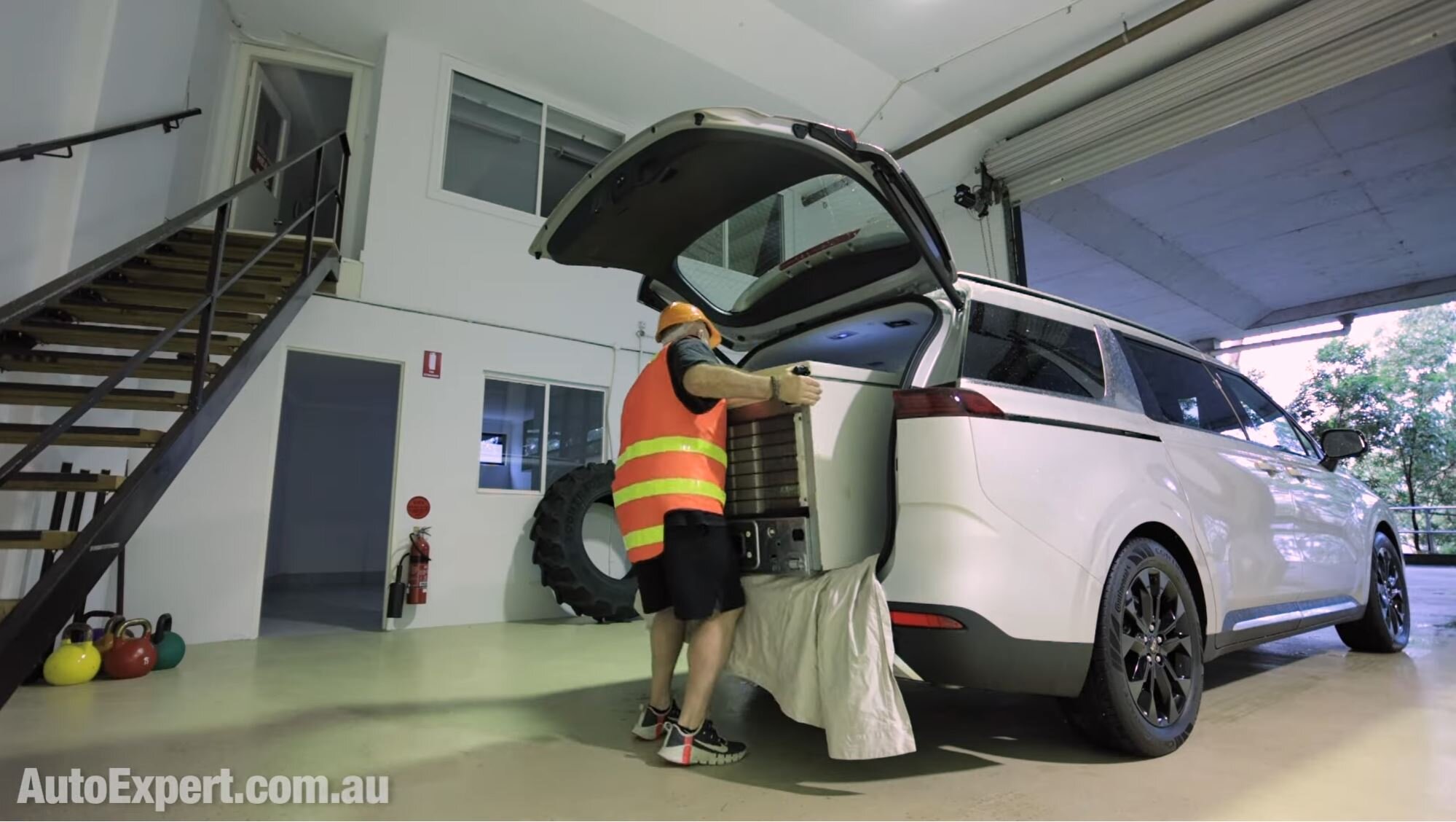
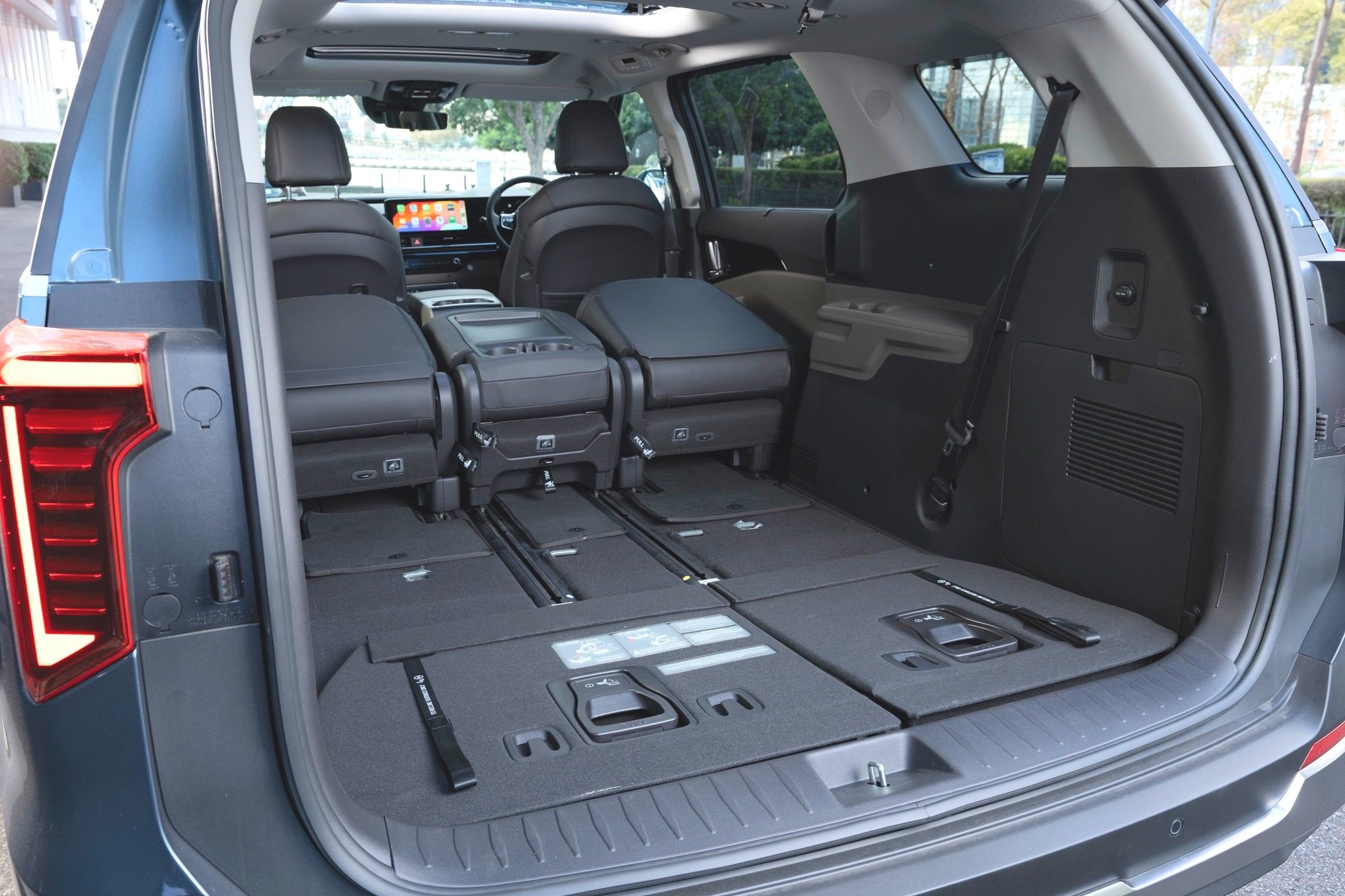
While we’ve lost the tilt-forward function for the row 2 seats when trying to engage Carnival’s van mode, it’s not such a huge problem because it is possible to jam a 1.75 metre tall fridge into the back of the Carnival.
It was very satisfying being able to move such a big fridge (700mm deep, 800 wide) in a vehicle as comfortable as the Carnival Platinum - without having to hire/use a trailer or a ute or whatever. And there was spare space all around the fridge for various whatever might accompany your friend-helping fridge relocation. Very versatile.
INTERIOR
It’s hard not to emphatically love the way the seatbelts are built into the seatbacks of row 2, on the shoulder section.

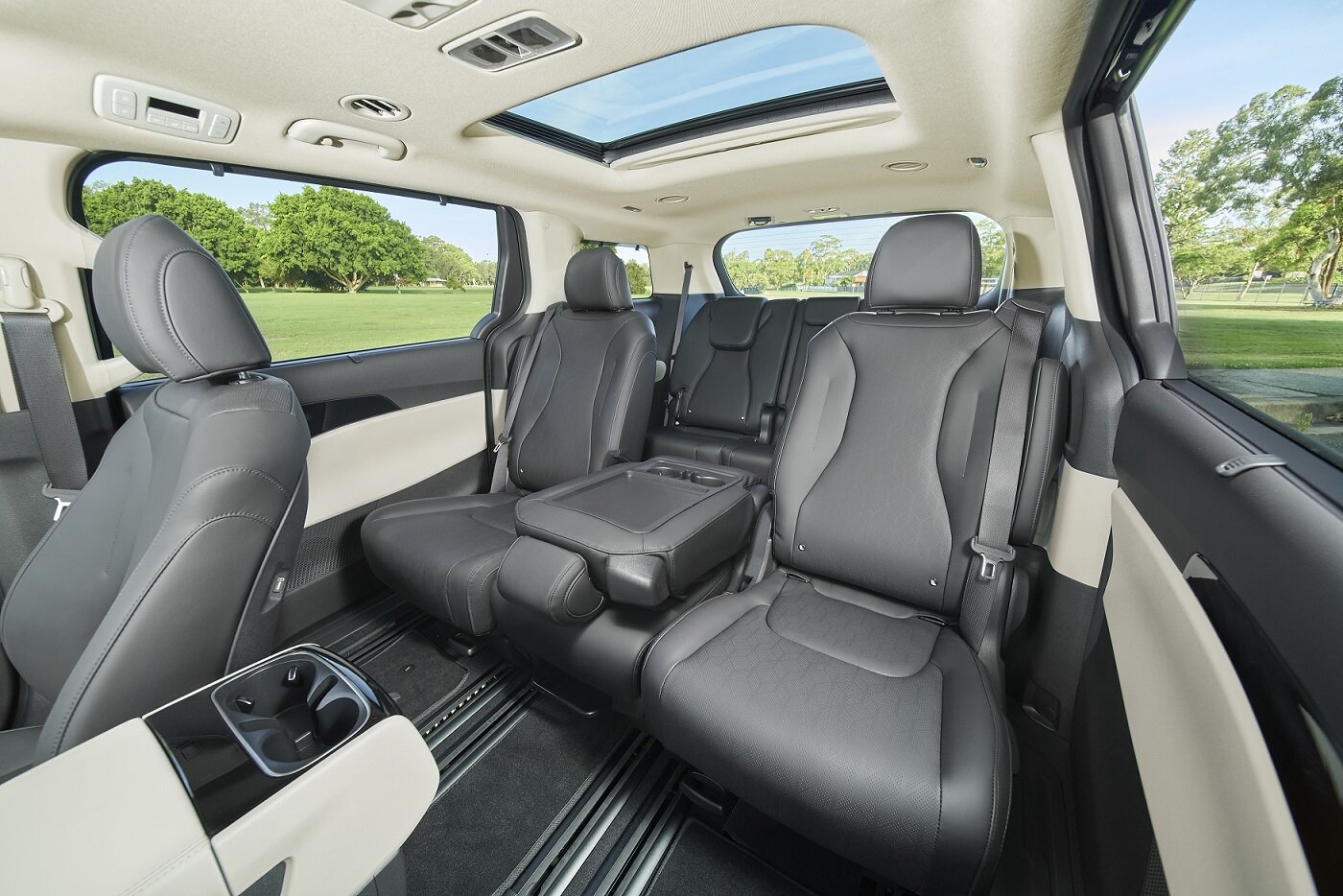
Almost every single SUV has your seatbelts inelegantly bolted to the C-pillar and they get trapped every time you need to fold the row 2 seats back in place, or they cling onto the seat as you try to fold it forwards so that when you flick them out of the way the buckle slaps against the inner door sill and scratches/chips the paint. This is daily wear and tear.
Generally, in SUVs, those seatbelts are just there gumming up the works whenever you try to use row 3 or disengage row 2. Not in Carnival.
Kia doesn’t get nearly enough praise for the design of its spring-loaded rotary gear selector. It feels great and a lot of unsung work in R&D has gone into making that switch feel good - and a lot of other switchgear, too, which feels very premium.
This is paradoxically cruel for those designers who’ve spent a lot of time getting this stuff right, because switches that feel flimsy or clumsy to use (or don’t last, or just break) get noticed straight away - they stick out.
But these hidden-in-plain-sight features which have been done right, well, they barely ever get noticed or appreciated. That’s unfair in the case of Carnival, and Sorento, it must be said.
The real triumph for this rotary switch is at the intersection of aesthetics and ergonomics, because it’s compact and reasonably elegant, and it’s really instinctive to operate. Rotate left for Reverse, rotate right for Drive, Park is in the dead centre of the dial, and the handbrake switch is directly below the dial where your hand falls when it comes off to go back on the steering wheel.
There’s no need to take your eyes off the road and you get plenty of haptic feedback, it’s easy to go from Drive to reverse, or vice versa, with your eyes firmly locked on the road to keep surveillance on the immediate environment. This is especially good when making quick decisions.
So, 13 out of a possible 10 points for this execution. This is unlike the Hyundai’s push-button system to control exactly the same transmission. Hyundai’s system is less intuitive and, until you can learn to do it by braille, it requires you to take your eyes off the road for a fraction of a second too long in order to change gear in a hurry.
It requires more cognitive bandwidth and is not nearly as intuitive, which is not ideal in close-quarters manoeuvring situations. This is one area where little brother is ahead of big brother.
Actually, it’s worth suggesting that Kia’s execution is up there with BMW’s transmission switchgear.
As a packaging exercise, you’ll love where they’ve put the spare tyre - amidships, in the middle of the wheelbase - if you sit in row 2 that spare is right underneath your feet. Should you ever need it, you wind it down from an access cover in the footwell, under the carpet.
Having it here frees up lots of luggage space down the back, even when the vehicle is maxed out on passengers with eight arses on all eight seats. If it’s raining and you get a flat, there’s no point having a spare wheel release under the boot floor if it’s full of your dry luggage, such is the case in SUVs. Again, this is just another one of those examples of the execution of Carnival being better than the notionally more fashionable SUVs.
However, there is a drawback to the Carnival spare, so keep reading for details.
To the Carnival’s infotainment system now: It’s very good, thanks especially to the huge 12-inch screen and decent organisation of the apps and menus. It’s pretty easy to find stuff with that OS, which is on Si, SLi and Platinum.
It’s a pretty big, landscape-oriented tablet; you get split screen functionality which allows you to have a simultaneous display of, say, navigation controls and music.
There remains an actual knob for the front passenger to assist the driver in adjusting the volume of the fat beats in the event they are busy with the primary driving demands. This is something updated in the current Sorento, fortunately enough.
Essentially you change the long, thin graphical display from HVAC controls to audio/media controls.

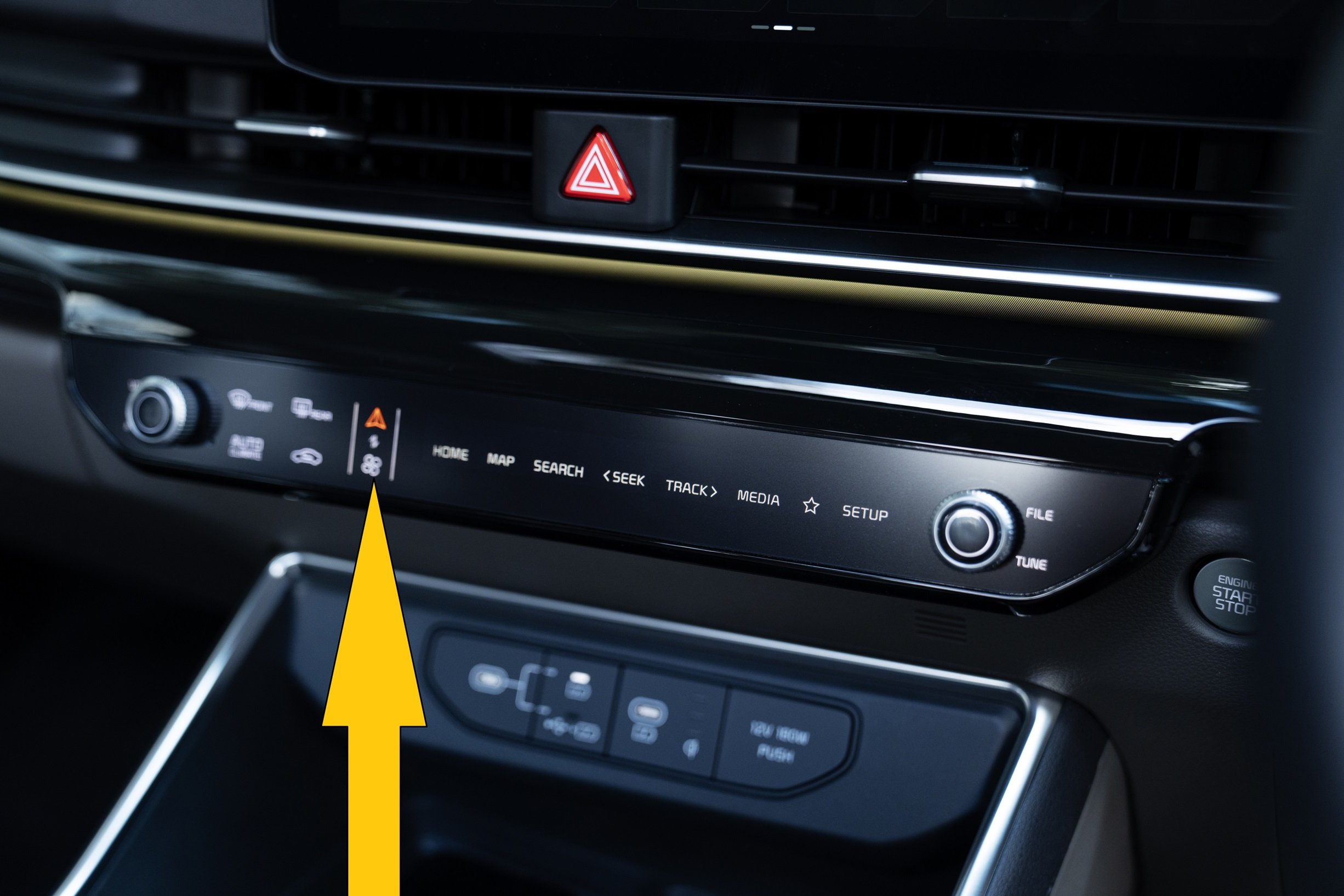
I'll help you save thousands on a new Kia Carnival here
Just fill in this form.
No more car dealership rip-offs.
Greater transparency.
Less stress.
ENGINES
The base engine in Kia Carnival is the 3.5-litre V6 petrol, an old, thirsty engine that dates back in Hyundai/Kia products before the brands’ renaissance.
Taking regular 91 RON petrol in a 72-litre tank, the consumption (combined lab test cycle) is 9.6 litres per 100km and emissions (combined lab test cycle) of 220g/100km.
It offers peak power of 216kW which seems great, but it’s all the way up at 6400 RPM, with peak torque of 355Nm offered slightly before that at 5000 RPM. So you have to rev it higher to get it to increase performance compared with the second engine choice.
The 2.2-litre diesel is the same engine now being used in the Kia Tasman dual-cb ute and it’s proven itself reliable, torquey and frugal without being ridiculously expensive. It offers peak power of 148kW down low at 3800 RPM, and peak torque of 440 Newton-metres as low as 1750 revs to 2750 revs.
Don’t buy that allegedly ‘premium diesel’ rip-off juice because Carnival’s 2.2 diesel will take the ordinary black label diesel in its also-72 litre tank, consuming 6.5 L/100km and emitting 170g/100km - on the same combined lab test cycle.
Let’s talk about the engines in use on the road, because the Carnival’s diesel engine, which is an additional $2000 over the petrol V6, is an important consideration on each respective model variant.
The 2.2 diesel provides a wall of low and mid-RPM power, which many people misunderstand and refer to as ‘torque’. But it’s really just low RPM power. This is what you want when you’re buying a large, often substantially laden vehicle full of child restraints, your actual kids, their sports gear, all your holiday paraphernalia - the list goes on.
In any case, this diesel makes ordinary driving feel effortless. You get a heap of power at low revs which is exactly what you want for normal driving, especially if it’s normal driving with six or seven bodies on board and a bunch of luggage - or even a two-tonne trailer, which only the V6 and diesel are rated to tow. The hybrid is restricted to 1000kgs.
If you want to keep as much of your money as possible, it would be worthwhile spending a little but more to have the diesel engine over the comparatively outdated petrol V6 alternative and stop short of overspending on the hybrid (unless you’ve got a specific usage case where lots of stop-starts and suburban driving is going to be happening every single day).
But if you are seriously restricted in your budget, the V6 will be adequate without being fantastic. It’s okay.
The hybrid powertrain is the 1.6 turbocharged-petrol engine with a 1.5kWh battery - it’s the same hybrid combination we’ve seen in the Hyundai Kona, Kia Niro, the Sportage hybrid, Sorento hybrid and the new Santa Fe to great effect.
What’s interesting about the hybridisation of Carnival is the modest increase in weight this has had, supplementing the V6. Kerb weight of the V6 GT-Line is 2206kg, just 128kg lighter than the 2334kg of the hybrid. That’s just 5 per cent heavier (the hybrid from the V6), but comparable fuel economy is almost 40 per cent better in the hybrid.
Currently, the V6 petrol Carnival gets - at best - 9.5L/100km. The hybrid Carnival is substantially more frugal with a figure of 5.8L/100km - that’s 38 per cent better. Compared with the diesel, the hybrid is 10 per cent better on fuel according to comparable combined cycle testing.
There’s no doubt that the Carnival hybrid, which costs about $14,000 more than the equivalent spec V6 petrol and nearly $4000 more expensive than the equivalent diesel variant, is a big ask for some family budgets - and that’s understandable.
Long story short: it’s going to take you at least a year to save the difference in fuel costs just to break even. If you go off diesel costing $1.86 per litre, that’s $133 per tank (72 litres) which means for the additional price of the hybrid, you could buy roughly 28 tanks of diesel instead of another $3800 for the base-model Carnival ‘S’.
If a tank of diesel lasts you two weeks, 28 tanks of diesel will last you about a year. Now, if you intend to keep your Carnival for the next 8-10 years, as many owners in the past have done with the previous generation before going again, you’re probably going to start making savings around year 2-3. This is just a rough estimate; there are thousands of variables in determining this kind of return or break-even point.
TOWING
Carnival is more configurable (than an SUV), and it tows two tonnes (maximum). And this represents a huge range of capability. It’s luxury transport for eight people, and you flick a few levers, then it’s luxury transport for you, the family and a rather large refrigerator, which liberates you from having to meticulously pack the bot of our 7-seat SUV.
...And you can whip a sizeable trailer out the back as well, so if you’ve got a boat or a van or a two-tonne box trailer, like moving heavy stuff between home and the office or simply relocating, it’s all do-able in a Carnival.
You can easily fit something long, like a door, from Bunnings, inside a Carnival - and still have four or five seats available. Or something bulky, like a washing machine, with three or four teenagers to help you install it, when you get home.
The real tragedy of Kia Carnival is it gets overlooked as the best option for a great many SUV buyers.
But it’s often ignored in favour of popular SUVs, many of which don’t have anything like the versatility of a Carnival with the diesel and V6 both offering a braked towing capacity of 2000kg, (750kg unbraked) and a static towball download of 200kg.
If you’re a family that likes long-distance holidays for camping or boating, maybe you live regionally but still use primarily sealed or good gravel roads to get around.
Many regional homes still use wood heating, in which case firewood collection or even light towing tasks like mulch or tip trips can be done with a Carnival.
The point here is: you have options. The hybrid Carnival powertrain is restricted to 1000kg of braked towing capacity and 750kg of unbraked capacity. But even that is still useful for hauling the odd bulky item or big stuff like eskys and 5-person tents for camping etc. There’s that versatility, again.
MAIN COMPETITORS
When considering other vehicles in this segment, there aren’t many that come anywhere close to the Kia Carnival on outright value and versatility.
There’s the Honda Odyssey, the Volkswagen Multivan and the Mercedes V-Class - but you absolutely don’t want to be buying products from those brands. Their customer support is atrocious, their build quality is terrible and, especially with Honda, the brand stability is in dire straits. Don’t buy any vehicle (let alone a people mover) from these brands.
HYUNDAI PALISADE
$72,300 (base, petrol) - $88,700 (Calligraphy, diesel) (approx.)
It’s not a true people mover, but it is a big, eight-seat extra-large SUV you can buy if moving to a people is something you just can’t get to grips with (or convince your other half to be seen in) - and that’s okay.
Palisade is like a LandCruiser or Nissan Patrol, but without the beefy off-road drivetrain. So it has better payload, but it weighs less, consumes less fuel and is $20K more affordable - but still gets all the features you could want.
There’s a diesel with all-wheel drive and a bunch of terrain-specific modes the for transmission, and you get reasonable towing capacity. It’s an ideal long-distance family holiday cruiser with full-size spare wheel, heaps of ground clearance and great row-3 access.
For more on Hyundai Palisade click here >>
HYUNDAI STARIA
$53,400 (Base, petrol) - $72,800 (Highlander, diesel) (approx.)
Staria is a van turned into a people mover, which is ideal for tall teenagers with lots of sports gear and families who take extended holidays that require loads of equipment. Short of buying a minibus, Staria is king here.
It’s a smart choice for visiting regional areas, national parks or yearly snowtrips because you can have Staria in all-wheel drive when you choose the diesel engine. Can’t do this with the Kia Carnival, and the Volkswagen Multivan wants about $13K extra with less luggage space.
The enormous sliding side doors offer superb headroom on entry and exit, slide the second row forward for elderly access and all without having to move child restraints. Think about skis, snowboards, mountain biking, camping, hiking, kayaking - any sports with lots of bulky awkward equipment.
There’s a full-size spare wheel, a single-panel tailgate which acts as a makeshift roof, and switching driver on long trips is easy thanks to first-row leg-through footwell space.
Engines include the same 2.2-litre turbo-diesel with all-wheel drive, or front-wheel drive V6 petrol.
For more on Hyundai Staria click here >>
DRAWBACKS
The Platinum’s level of poshness might make lesser S and Sport variants look comparatively poverty, side-by-side, when in fact the Sport+ is certainly not.
The base model S (below) is, however, properly poverty. It’ll only be popular with the dead-set stingy stooges among the private buyers (you know who you are), and fleet managers, and frankly there’s only a subtle distinction there.
Carnival S doesn’t even get basic rudimentary fog lamps to fill the dedicated cut-outs in the front bumper. Instead you get swathes of matte black plastic blanking covers, on a $50k vehicle.
While I do love the remote hands-free tailgate opening function, if you simply stand near the back of the vehicle doing, I dunno, anything else - swinging a cat or bench pressing the dog - the tailgate will automatically open when you specifically don’t want it to. All simply because the key is in your pocket.
Storing an ejected leather seat
The row 2 centre seat removal is useful, however, you’ll need to find somewhere safe and dry to store it in your garage or in the house somewhere. Although, this flexibility with row 2 is unavailable in the notionally sexier Hyundai Palisade which is fixed as either a 7-seat or 8-seat hauler.
And it’s a heavy thing too. You wouldn’t want to be hauling that thing uphill or trying to stack it somewhere high in your garage, lest it falls on someone.
Seats tuck, but no roll
The row 2 seats no longer pivot up and rotate forward toward the backs of row 1 seats. This feature was available on the previous generation Carnival and it rocked, especially when transitioning the vehicle into van-mode for maximum lengthwise floorspace and load carrying capacity for that all-important trip to Bunnings.
This lack of tipping forward functionality is a consequence of the seat system being re-engineered for club seating configuration (where row 2 seats can face rearward, toward row 3). We don’t get to do that here in Australia because it’s incompatible with a wiring harness for the seatbelt reminder system for row 2 outboard seats. Although, you can turn the row 2 centre seat rear-facing.
Here in Australia we lost the tilt and fold forward, and we don’t get the club seating. I see all this as a net deficit for Australian buyers.
Protecting your assets
The hateful catch with having the Carnival in van utility mode is that you need to protect the carpets and side panels from the inevitable dents, scrapes, gouges, and garden variety scratches you’re gonna put in it.
All those old towels and sheets you’ve been hording against your wife’s better judgement all these years, well, they finally have a use. You’ll also wanna watch you don’t scruff the roof lining with anything sharp, wet, oily or staining. This is the price you pay for combining practicality and comfort in a well-executed all-seasons family vehicle.
That V6 engine
The old V6 petrol needs to go, but if you’re on a tight budget, I guess it’ll have to do.
I would also be quite enamoured of the 2.5 litre turbo-petrol four which is absolutely available to Kia for its current vehicles and would fit beautifully in the front of Carnival and make it perform awesome.
It would also be more refined and more frugal on fuel compared with the V6 petrol engine which Carnival actually offers as an alternative to the diesel. I suppose Kia runs with the comparatively outdated V6 to appease America. They do love their V6s.
I do sincerely hope they catch up with the rest of the world. I do hate knowing the V6 is sitting there, seeing as I know how much better the turbo-four would’ve been.
The Spare
As much as I love the packaging design of the spare tyre in the centre of the wheelbase for generous luggage space, the spare is also mounted on the right-hand side of the vehicle - the driver’s side, in our market.
In the American market, this wouldn’t be problematic because they’re driving from the left-hand side of the vehicle and travelling on the right-hand side of the road, where pulling over the change a flat puts the spare on the shoulder-side (the safe side) of the road in which to operate in a potentially vulnerable position.
In our market, it’s on the rooly rooly dangerous side of the road, which is exposed to passing traffic where you’re more likely to get cleaned up administering to a flat tyre. Oopsie-daisy.
We get to be second-class citizens on this, but it’s frankly not such a big deal, if you think about it. All you need to be is smart enough to drive slowly on the flat tyre until you get to somewhere safe like an emergency stopping bay or some other location where you can physically separate yourself from the hazard posed by approaching traffic.
Unfortunately, of course, as we all know, not everybody is that smart. But it is a brilliant idea to do that, even if it trashes the flat tyre. Tyres are replaceable; you are not.
Adding insult to injury, the spare is a space saver. This is quite a poor choice in my view, I think you’re agree, for a vehicle this heavy and seemingly otherwise ideal for long-distance regional touring, and capable of towing a rather heavy two-tonne trailer.
If you are towing heavy regularly enough, I suppose you could get the trailer manufacturer to mount a full-size Carnival spare on the trailer, if there’s an opportunity for that, because I would not want to be on a space saver, towing something heavy, on the freeway, in the middle of the night, in the rain, hundreds of kms from home, on a fricken space saver - which doesn’t grip the road as well as a normal-sized tyre - and which is limited to 80km/h with traffic rocketing up behind you at potentially 30km/h (or more) closing speed.
I would hate that. It would get old so quickly. But on the flip side, you have to ask yourself, ‘How often am I going to get a flat tyre?’ You can balance that out and find some point of parity that suits your own risk management agenda.
Safety systems: A human factors faux pas
One final hate. The forward collision warning is a human factors failure. Not so much a bespoke failure to Kia (or Hyundai) or the Carnival specifically, but an industry-wide failure, generally.
This is what happens when corporate lawyers and ANCAP-appeasing middle-management bureaucrats push engineering best practices to wone side. I hate that.
This system false-alarms far too frequently. When there’s absolutely no risk of a forward collision. It’s strident and intrusive. You’re on a twisty suburban street, approaching a gentle right-hand bend at a perfectly calm and legal 50km/h, and there’s a vehicle legally parked on the left which you’re aimed at because of geometry. Everything’s fine, you’ve seen it, it’s handled, there’s no salient risk of crashing. You’re on it.
And the warning system lights up and suddenly it’s Black Hawk Down.
Except it’s not Black Hawk Down. There’s no ‘RPG hit on Engine 1’ and you don’t need to ‘auto-rotate’. We’re not going down into a ‘hot LZ’.
So you get into the habit of just routinely ignoring it. This is bad if you ever are in the situation of an imminent crash and you are actually required to respond, but you’ve tuned out because: Boy who cried wolf.
CONCLUSION
WHY CARNIVAL BEATS A 7-SEAT SUV
Automated access: If you’re juggling your kids, their friends, your ageing mum, the groceries, plus a baby and whatever else makes your life tick, having to free up one arm to open a door (or three) is a complete pain - sometimes literally.
Carnival offers huge automated sliding doors on each side, plus an automated rear tailgate - a major plus for both ingress and egress. And don't worry about the danger of the doors becoming de facto guillotines: each has an anti-trap mechanism. So, happily, it doesn’t matter how stupid your kids’ friends actually are - their parents won’t be suing you over that inconveniently lost limb. The door will never go ‘Terminator - Rise of the Machines’ and cut anyone off.
Crasworthiness in row three: In some (but not all) five-star SUVs, anyone who sits back in row three is - literally - a second-class citizen on safety. Even on five-star SUVs, critical head-protecting curtain airbag protection is often limited to rows one and two only. I don’t know why. Obviously this information is hard to dredge up - and in particular the carmakers selling the SUVs without curtains for the third row don’t shout that from the rooftop (or put it in the brochure). Happily, the Kia Carnival protects everyone equally on the side impact front, even way back in row 3. You even get air-con vents back there, and a sun shade/privacy screen.
Child restraint anchorage points: I get many anguished e-mails from prolific breeders searching in vain for that special ‘wide-bodied’ SUV that can accommodate three child restraints abreast. SUVs generally offer child restraint anchor points in row 2 only, where there are three, and if you have three young children, that can get a bit squeezy (or even one teenager and two babies from the second time around...)
But Carnival has four child restraints. (And the three outboard ones - row 2 & 3 RH seats and row 2 LH seat - are ISOFIX-compatible as well.)
Accommodation and loadspace versatility: The second-best thing about Carnival - in the objective SUV-thrashing domain - is load and accommodation versatility. Carnival transforms rapidly from responsible family transport to a spacious, comfortable van, in moments. And there is tremendous flexibility between accommodation and cargo space. It's a great vehicle for taking the kids to sport and getting dad to the hardware store - even in the same outing. I put 12 bales of mulch in it from the nursery during the week I evaluated the Carnival - and it wasn't even close to capacity.
Walk-through to row 3: SUVs are all about the pricktease promise of seven-seat deliverability, but Carnival is all about the sex - it delivers, in other words. You do not need to be a gymnast to access row three. In an SUV with child restraints occupying row two, your 70-year-old parents are essentially going to need to be gymnasts - because that’s the only way to access the third seating row with child seats fitted. It’s inconvenient, if three generations want to go on a picnic together, for example.
Decent luggage space with all seats deployed and in use: Most seven-seat SUVs are a compromise on this. Luggage space is very limited when all the seats are deployed. Not so with Kia Carnival - there is decent luggage space even with eight people on board.
Don’t misunderstand the drawbacks with Carnival, AutoExpert recommends this vehicle to you without reservation if you’re in the market for a vehicle for doing these kinds of duties.
It’s like any relationship - you embrace the things you love and learn to live with the things you hate. This goes for every relationship from that with your lovely wife to your job and even your smartphone.
You have to know about its limitations and how to adapt to them, and then learn to simply live with them as a consequence of benefitting from all the positives a Carnival has to offer. This way you’re not spending the big bucks while operating under the delusion that you’re finally procuring the perfect car is just paving the road to heartbreak. No car is perfect. No relationship - with a car or otherwise - is perfect.




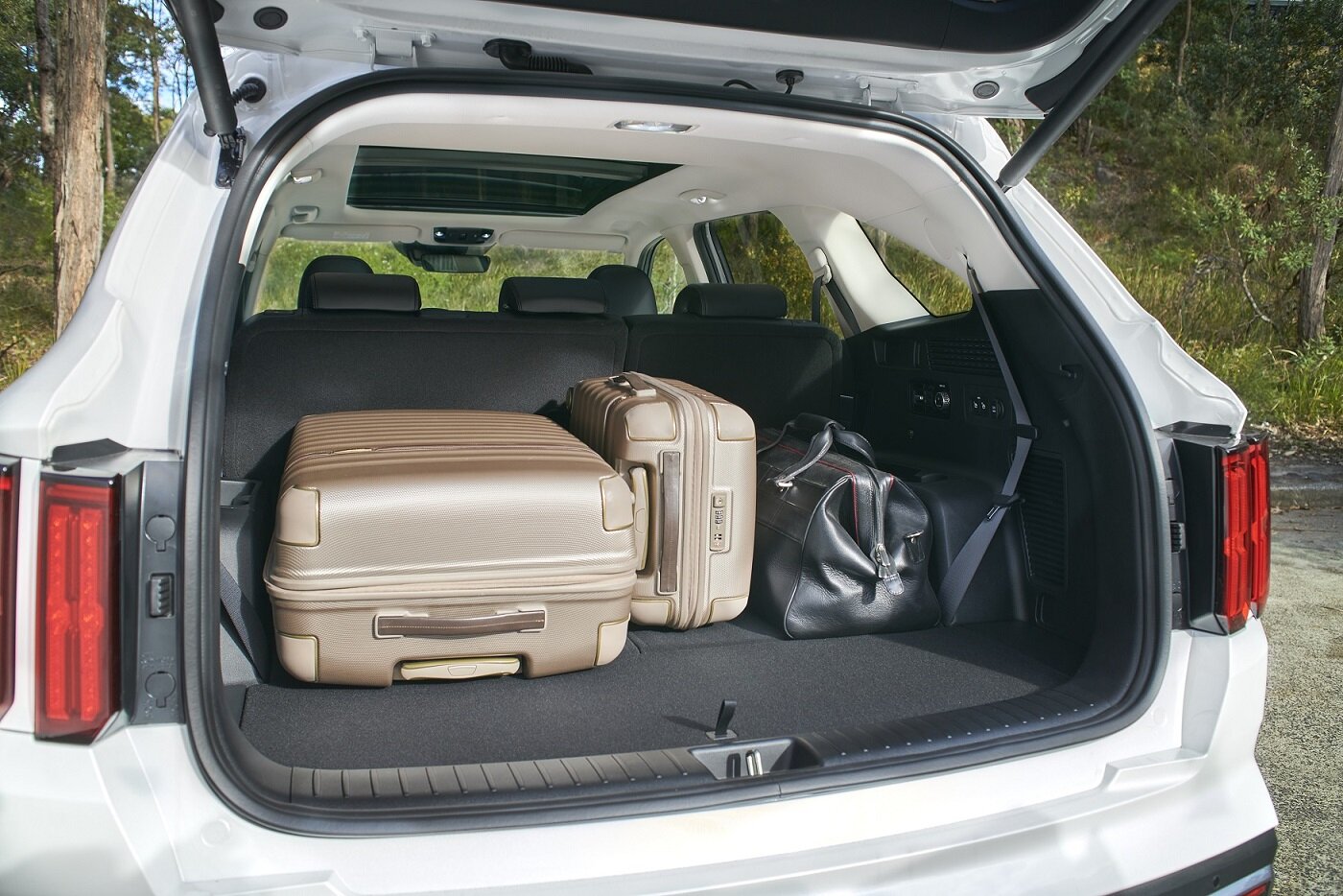
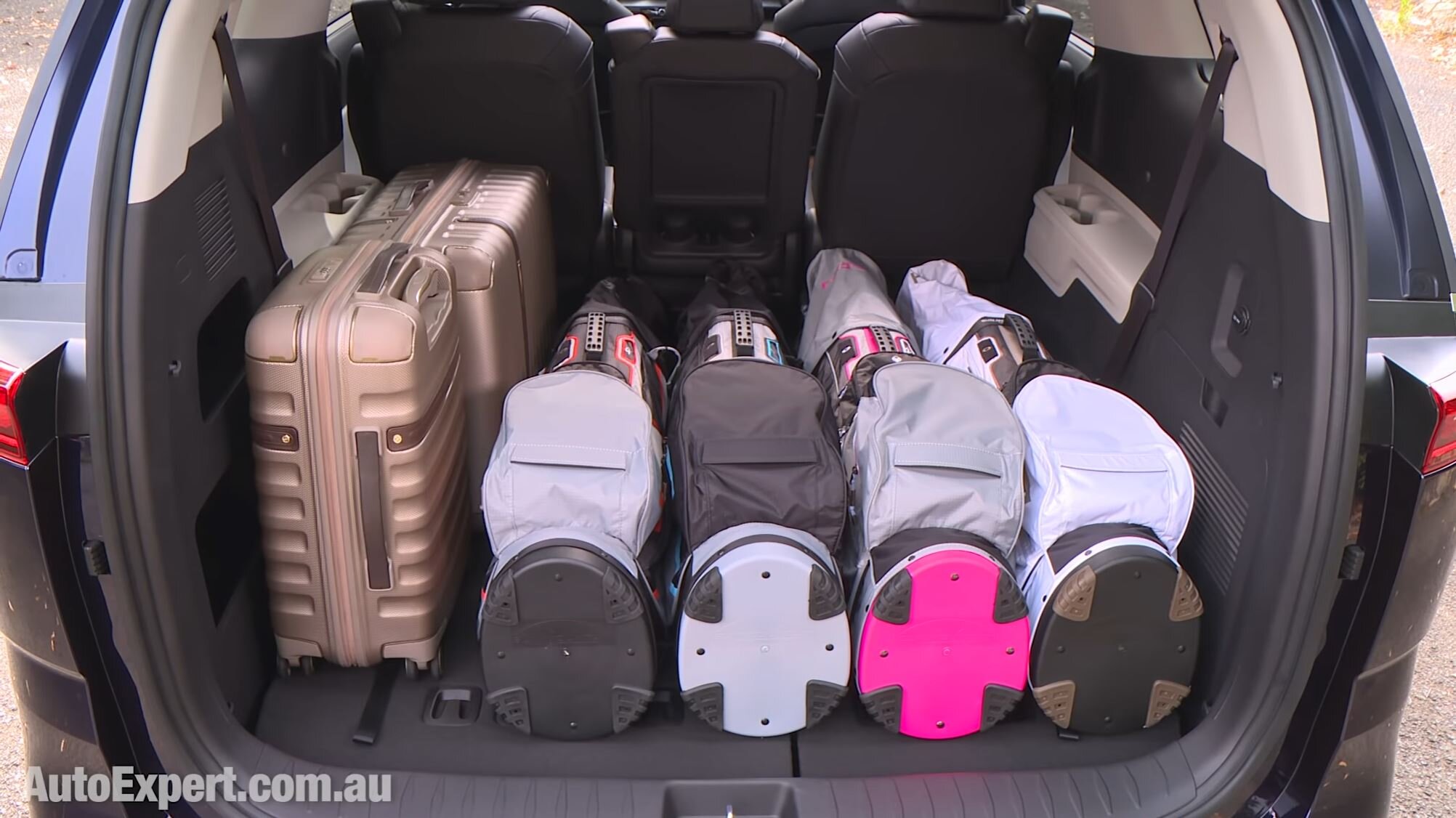


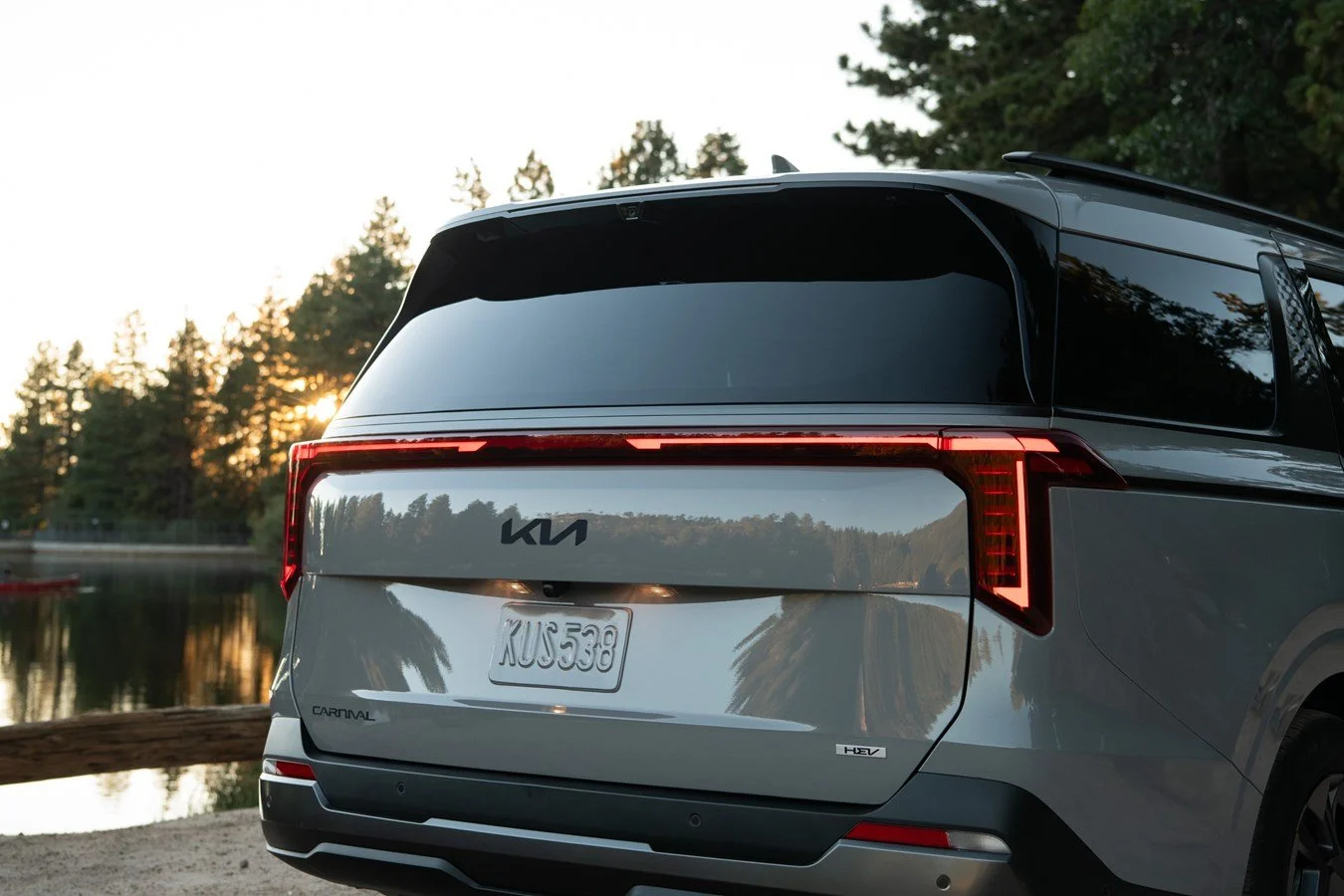






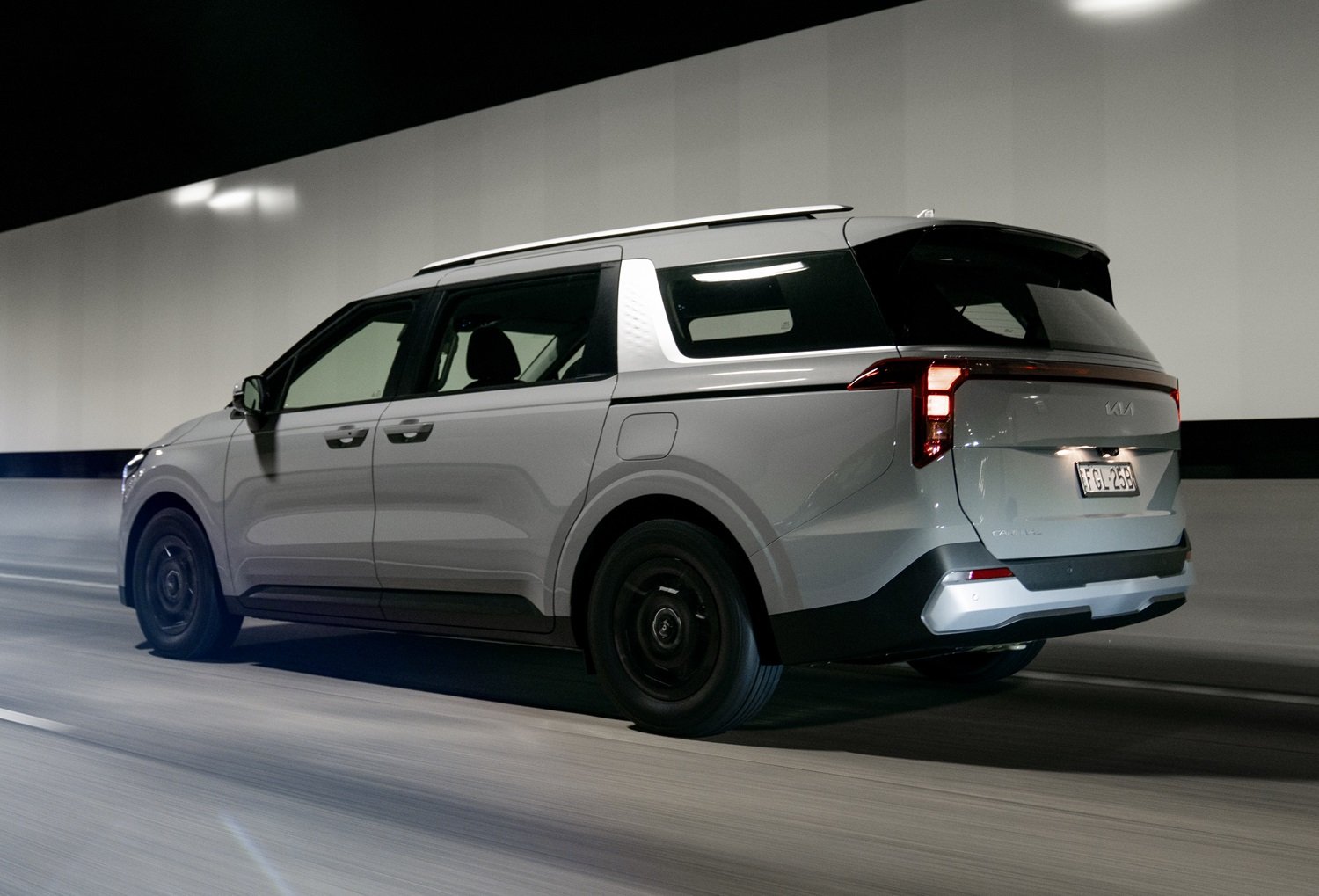



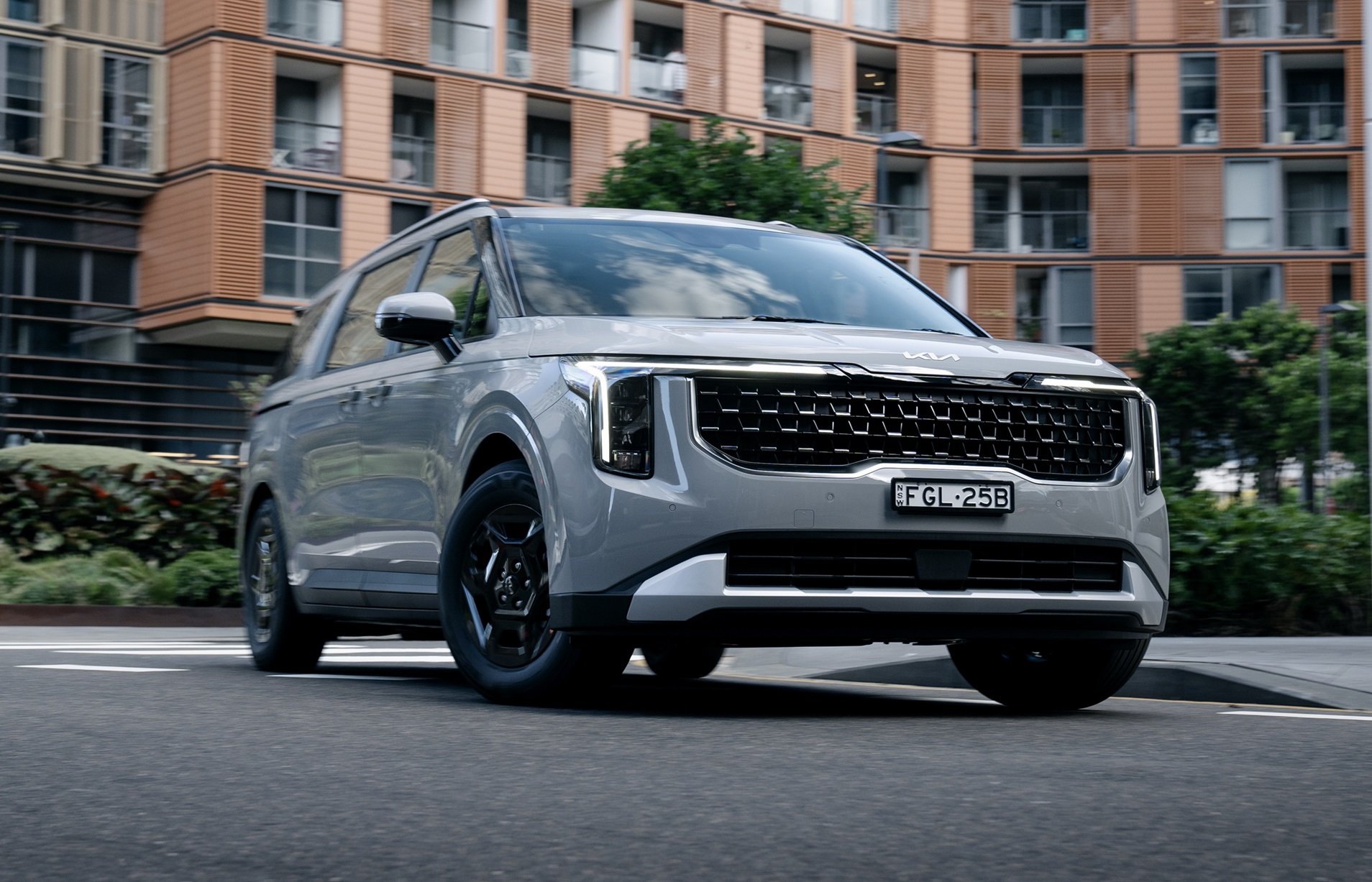





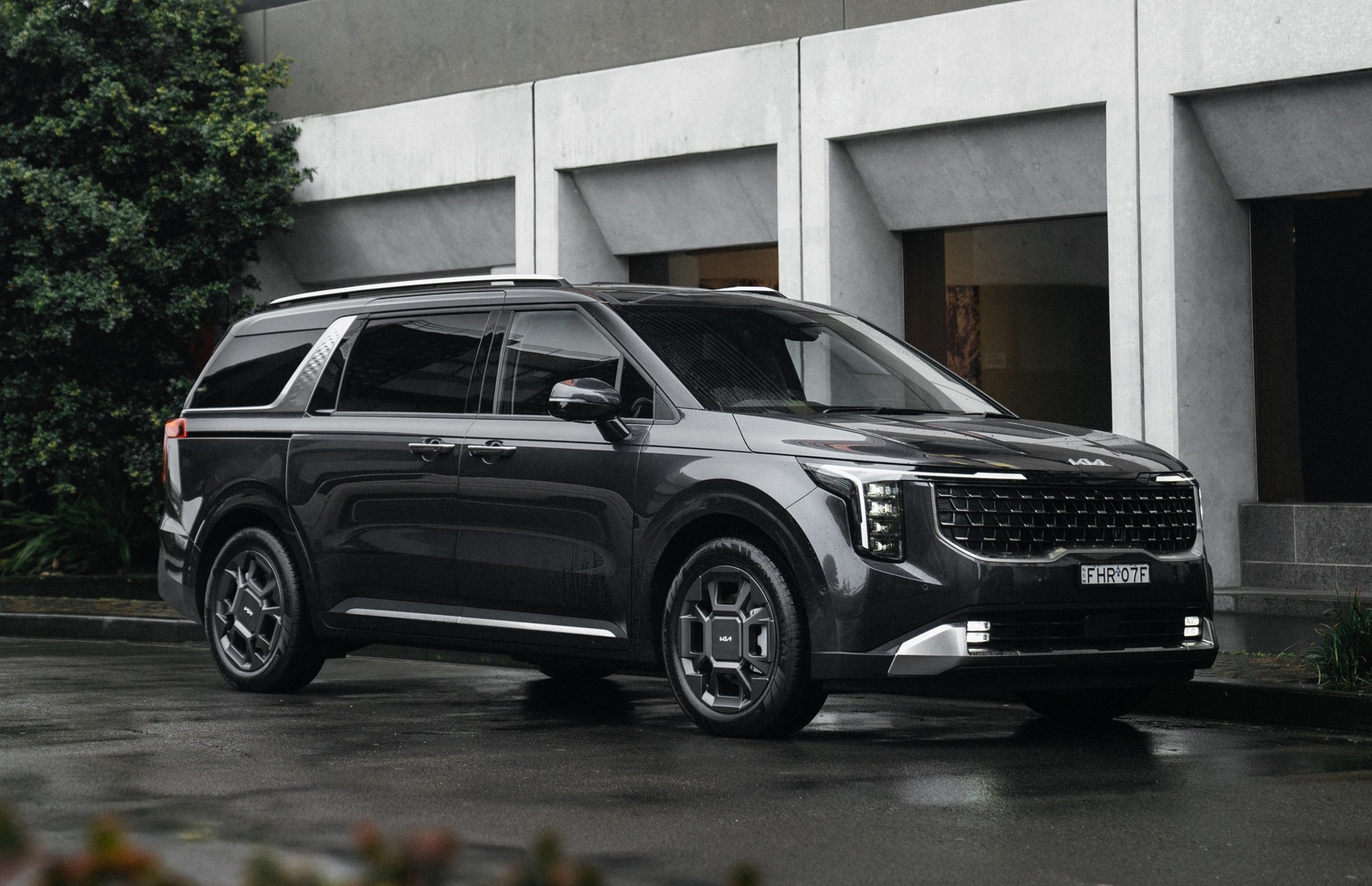

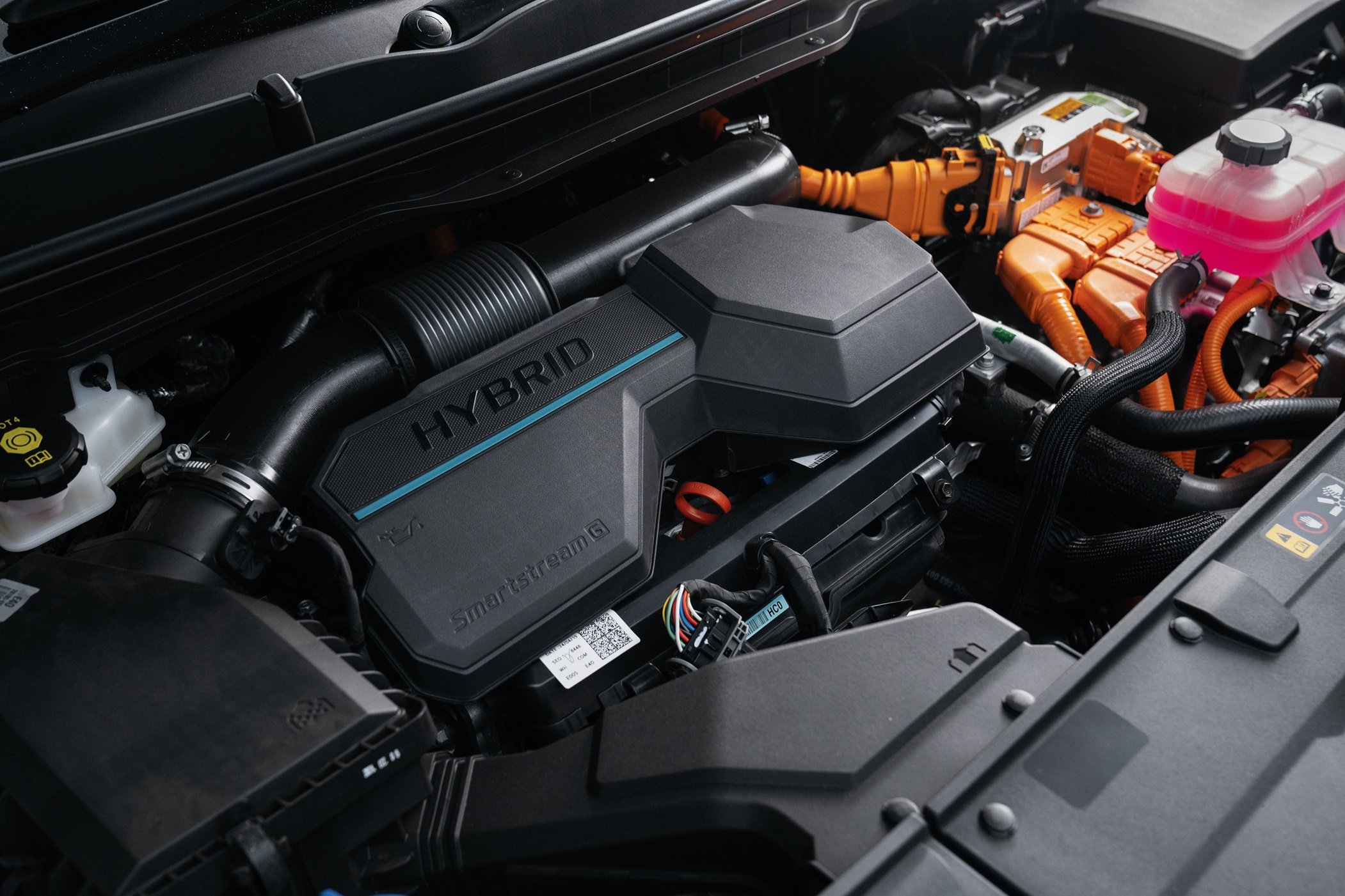
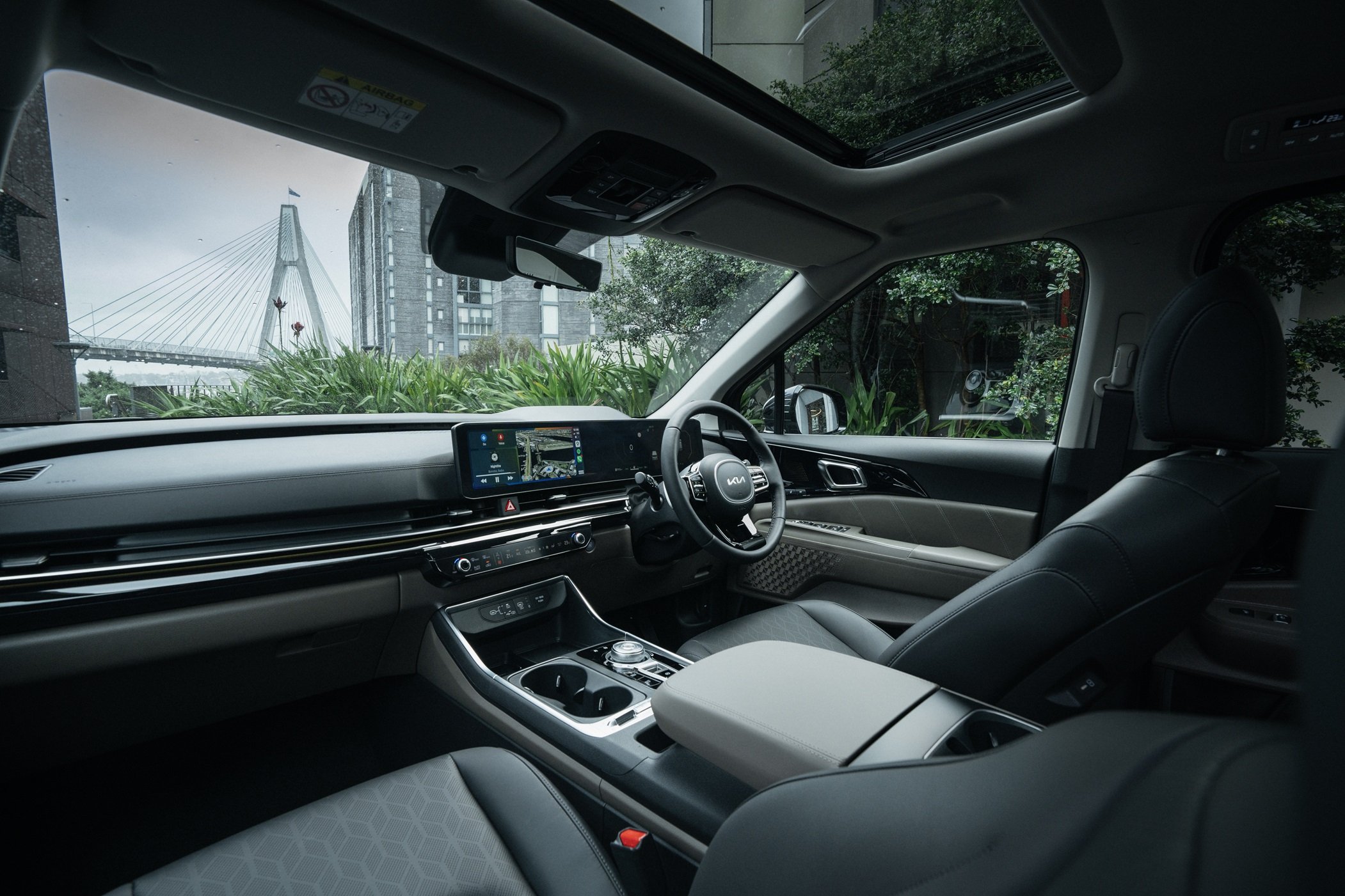
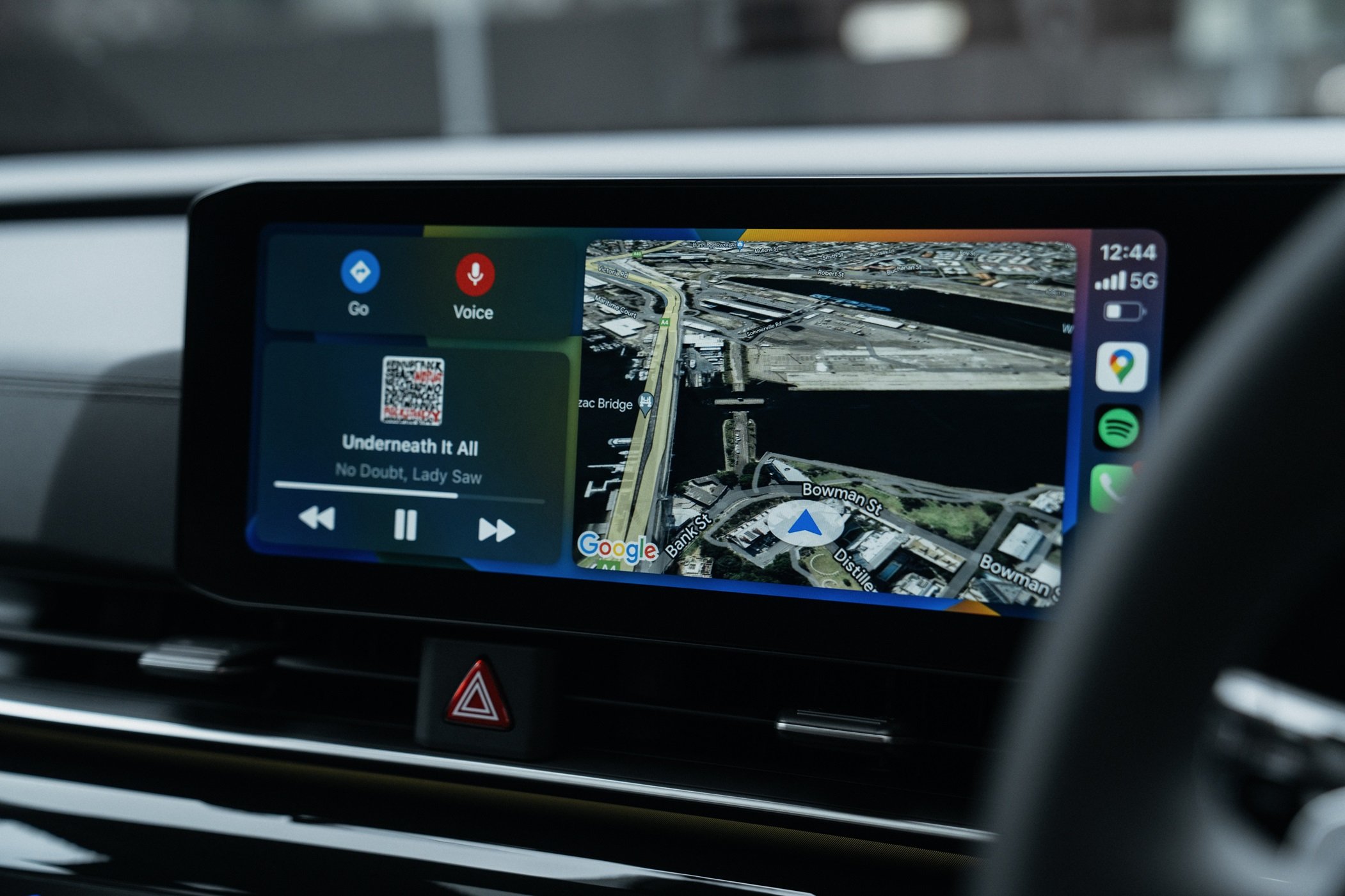
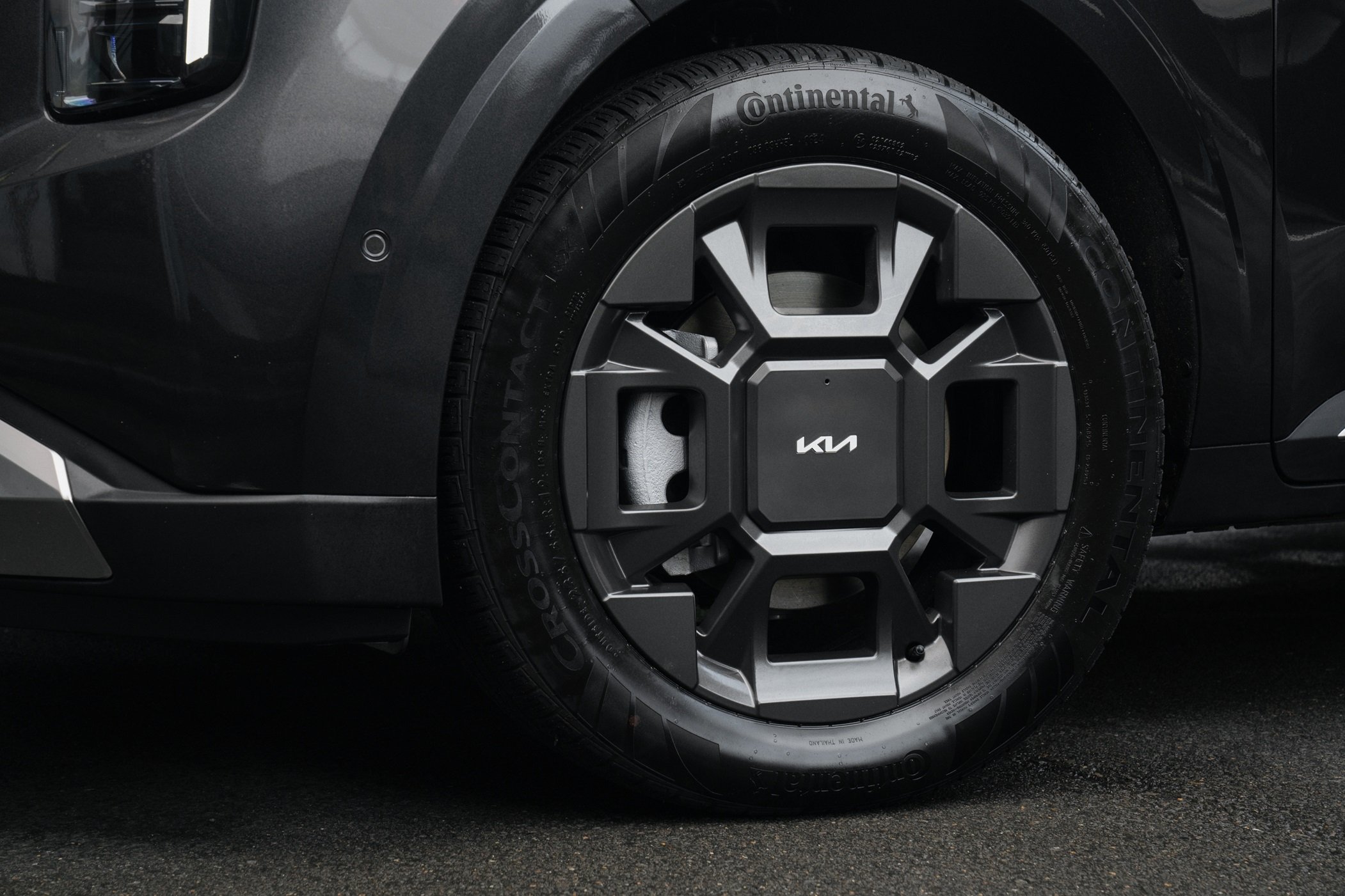





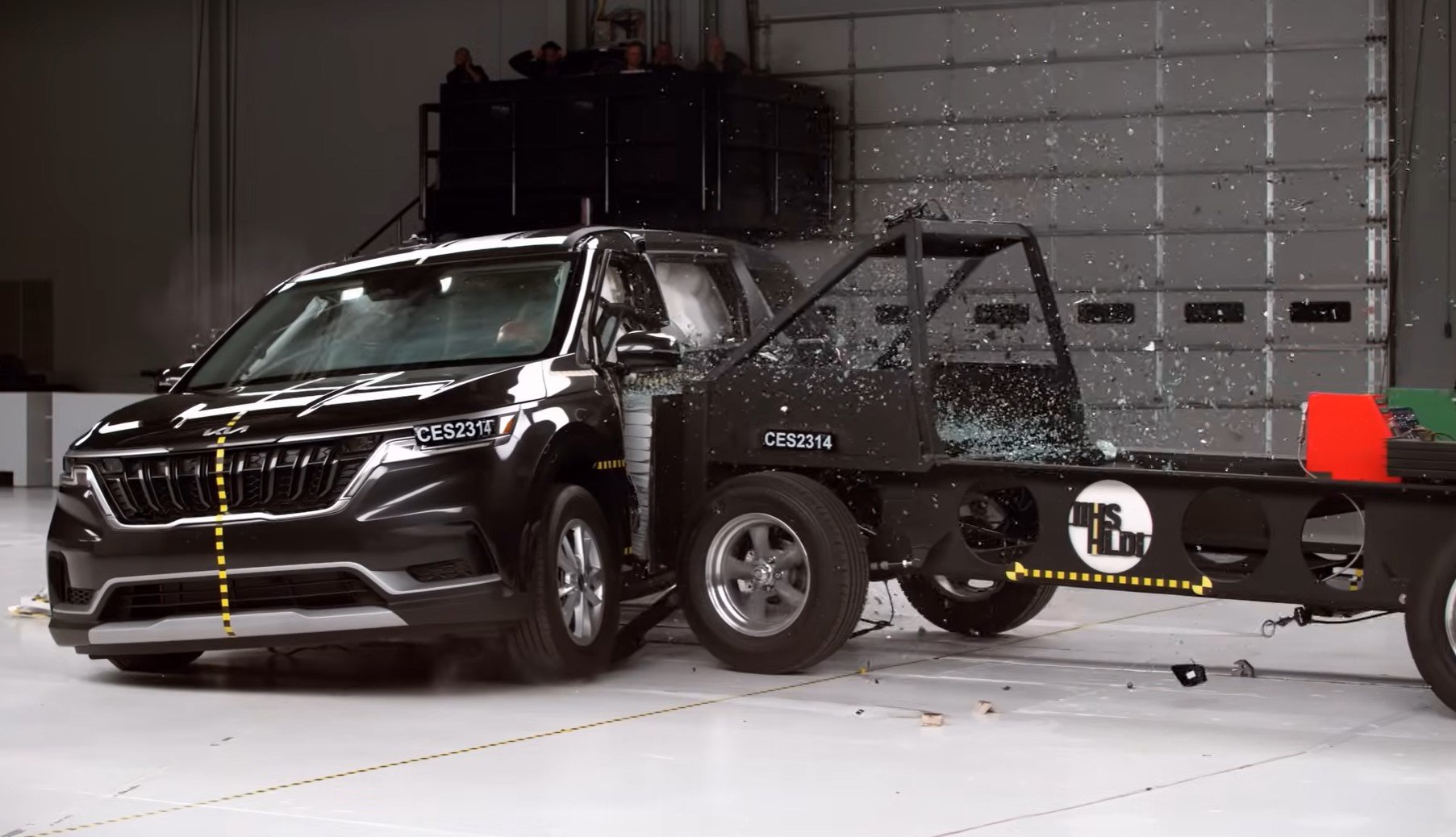
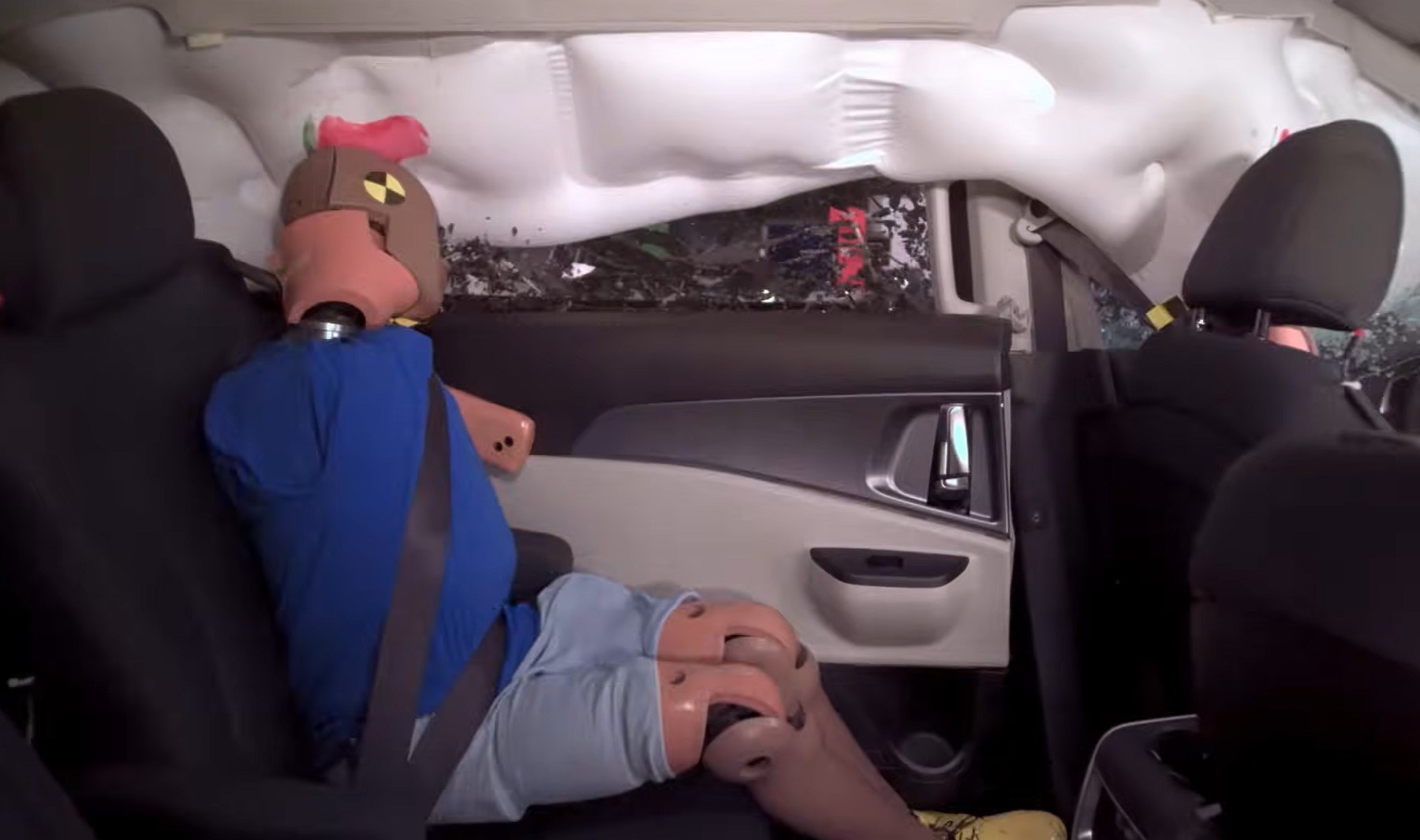





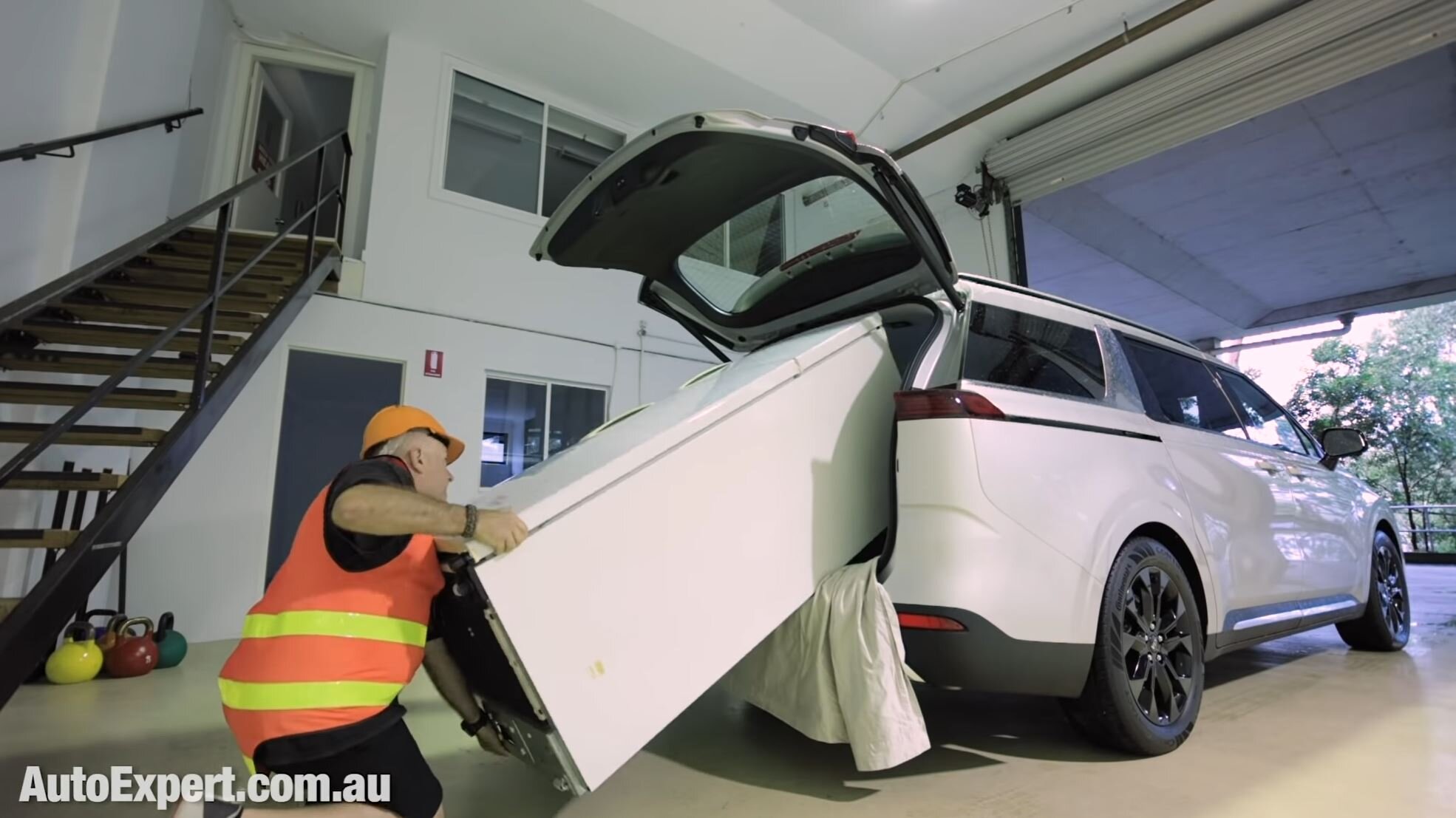


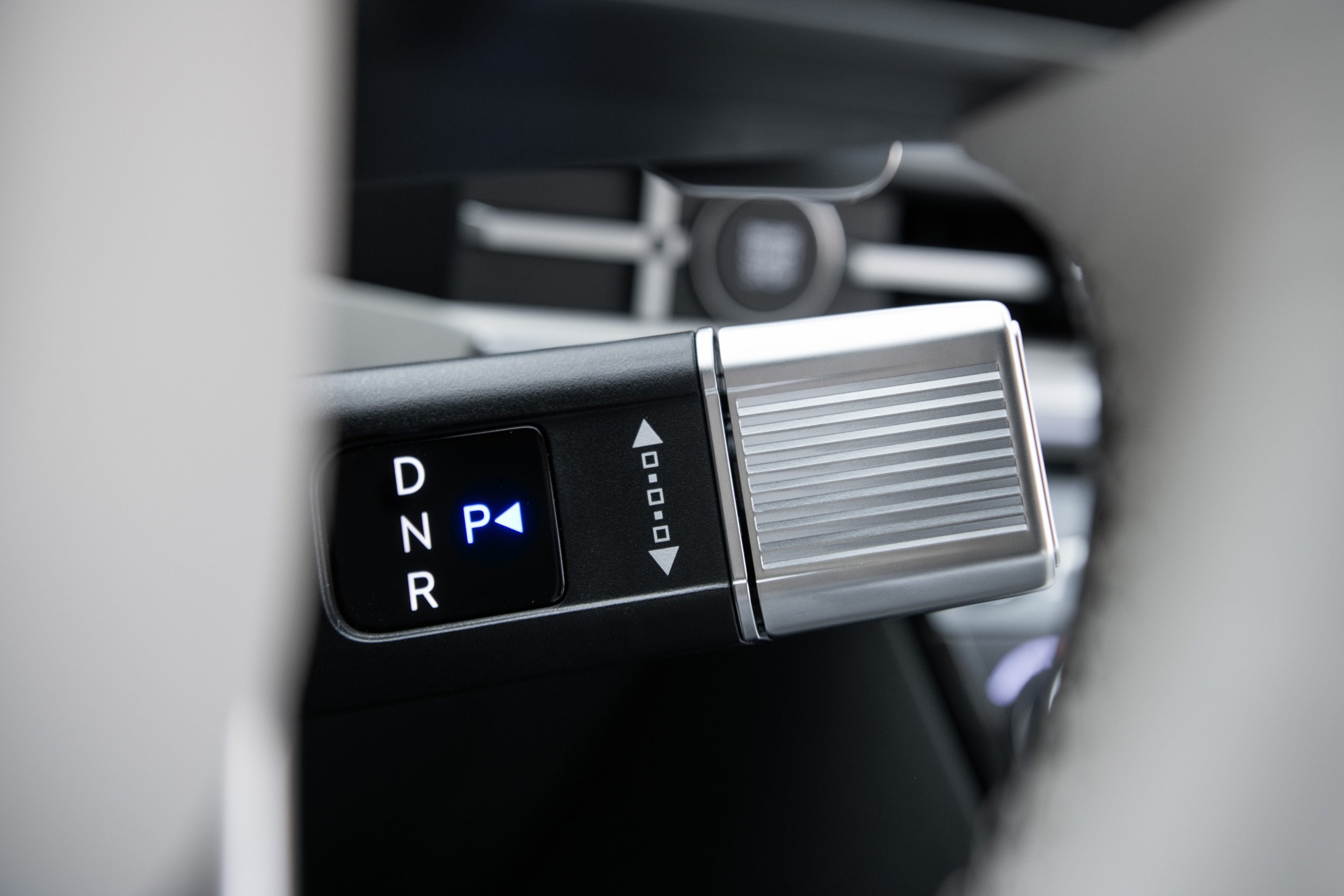

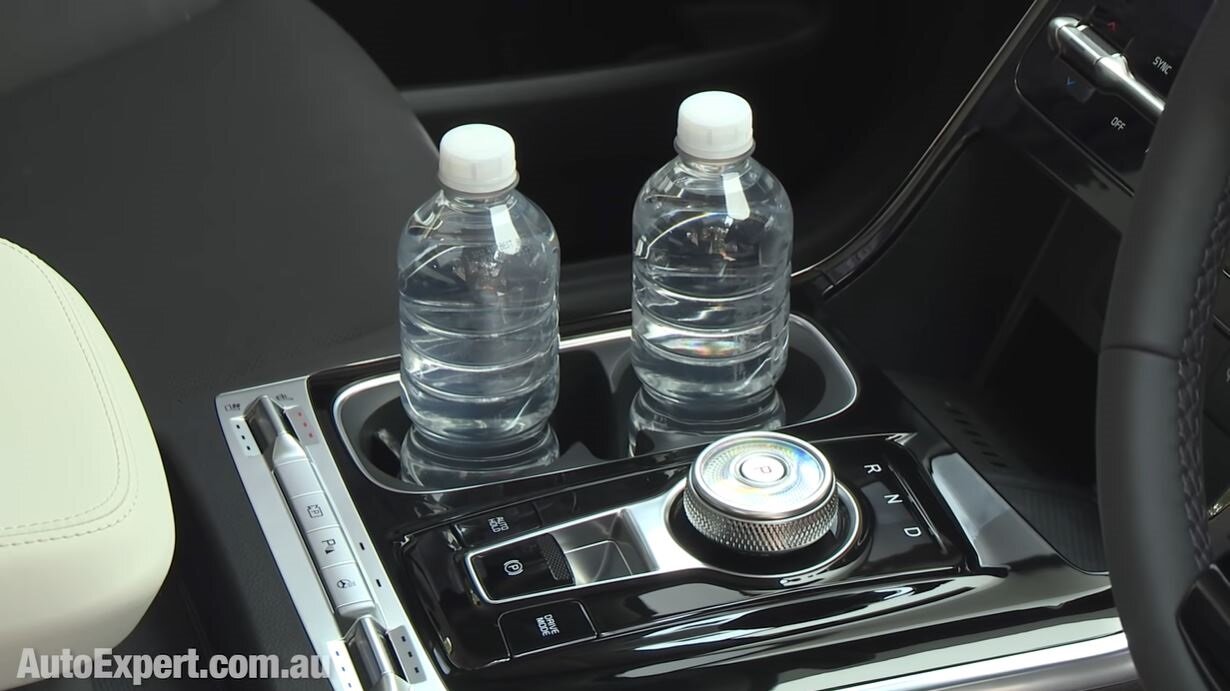

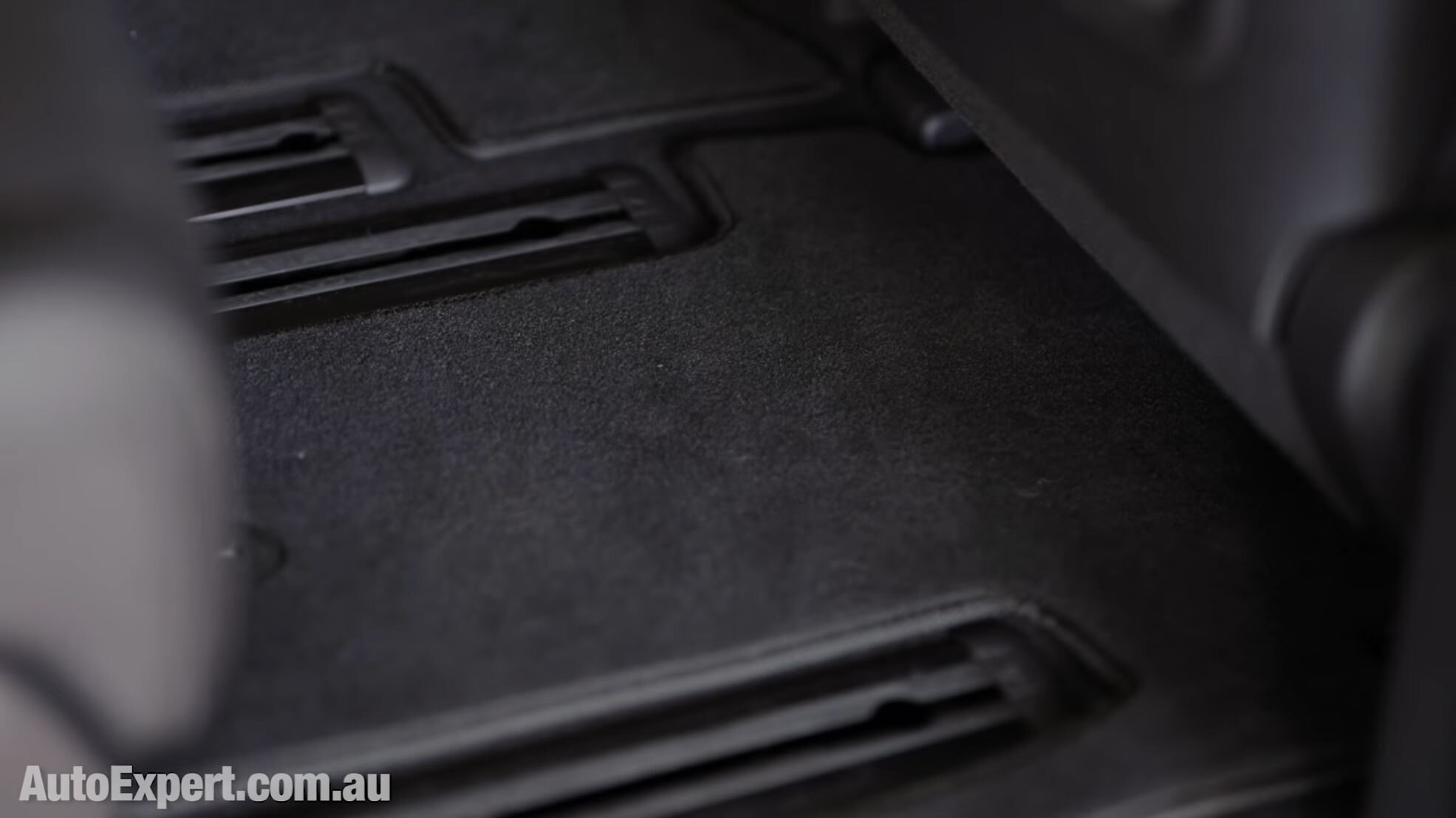



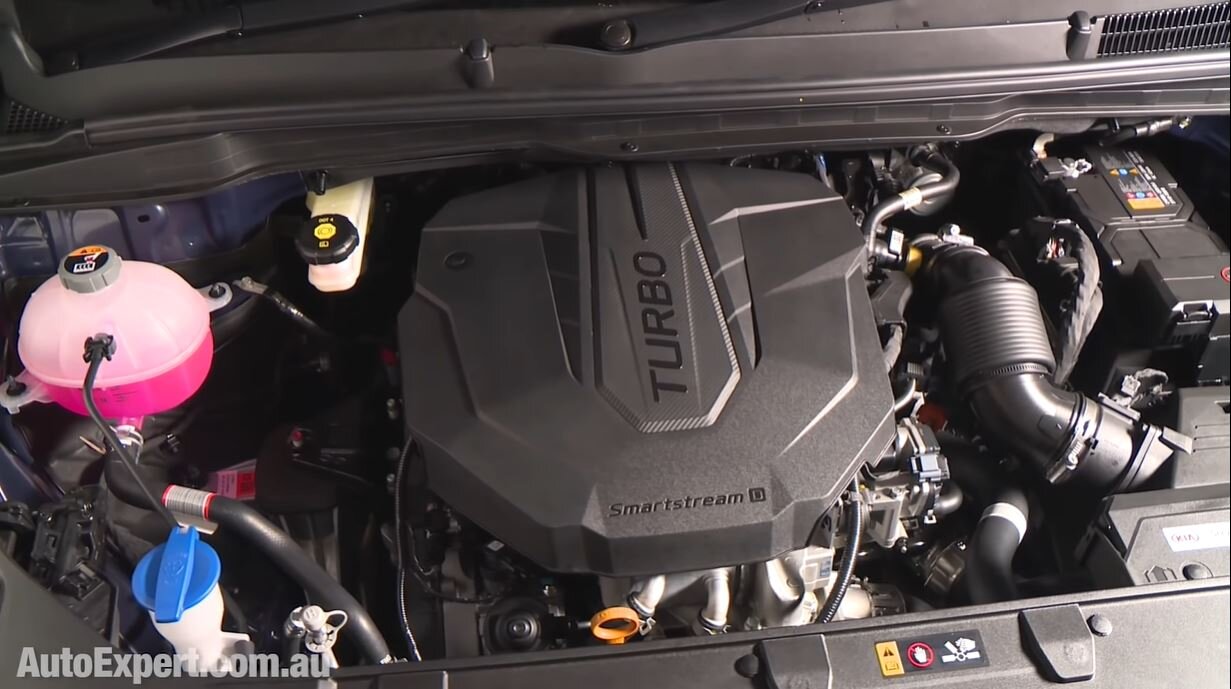
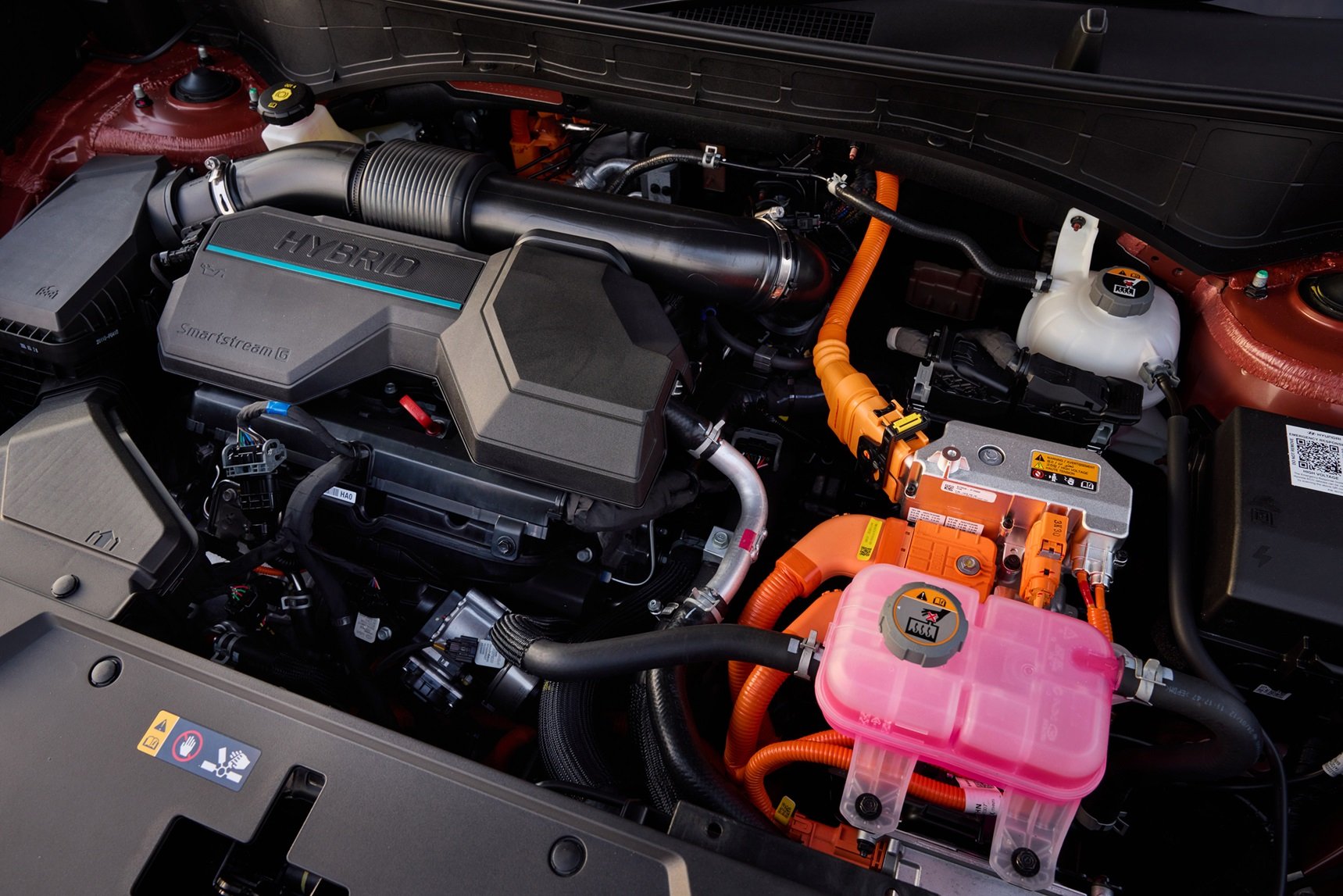


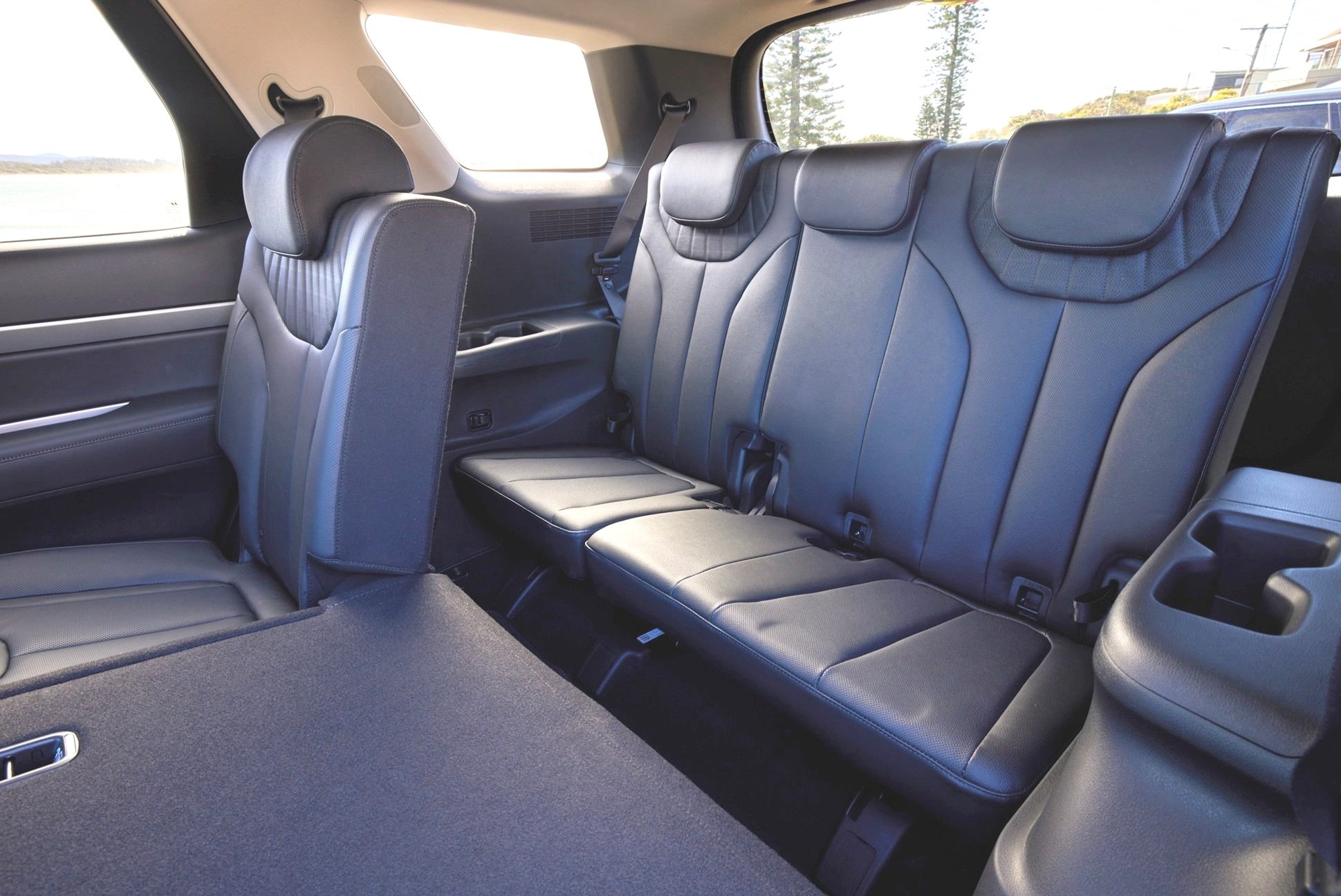
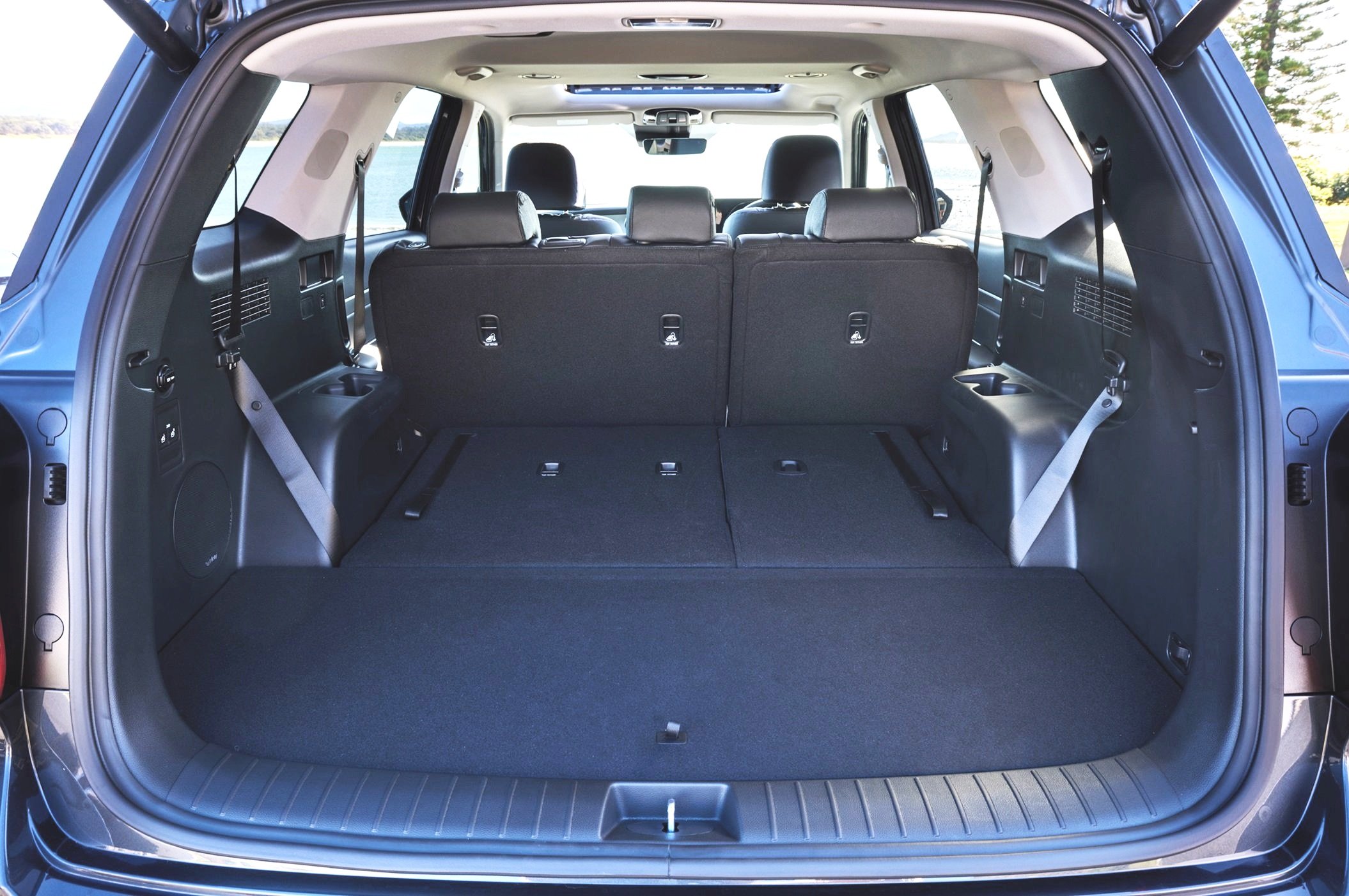
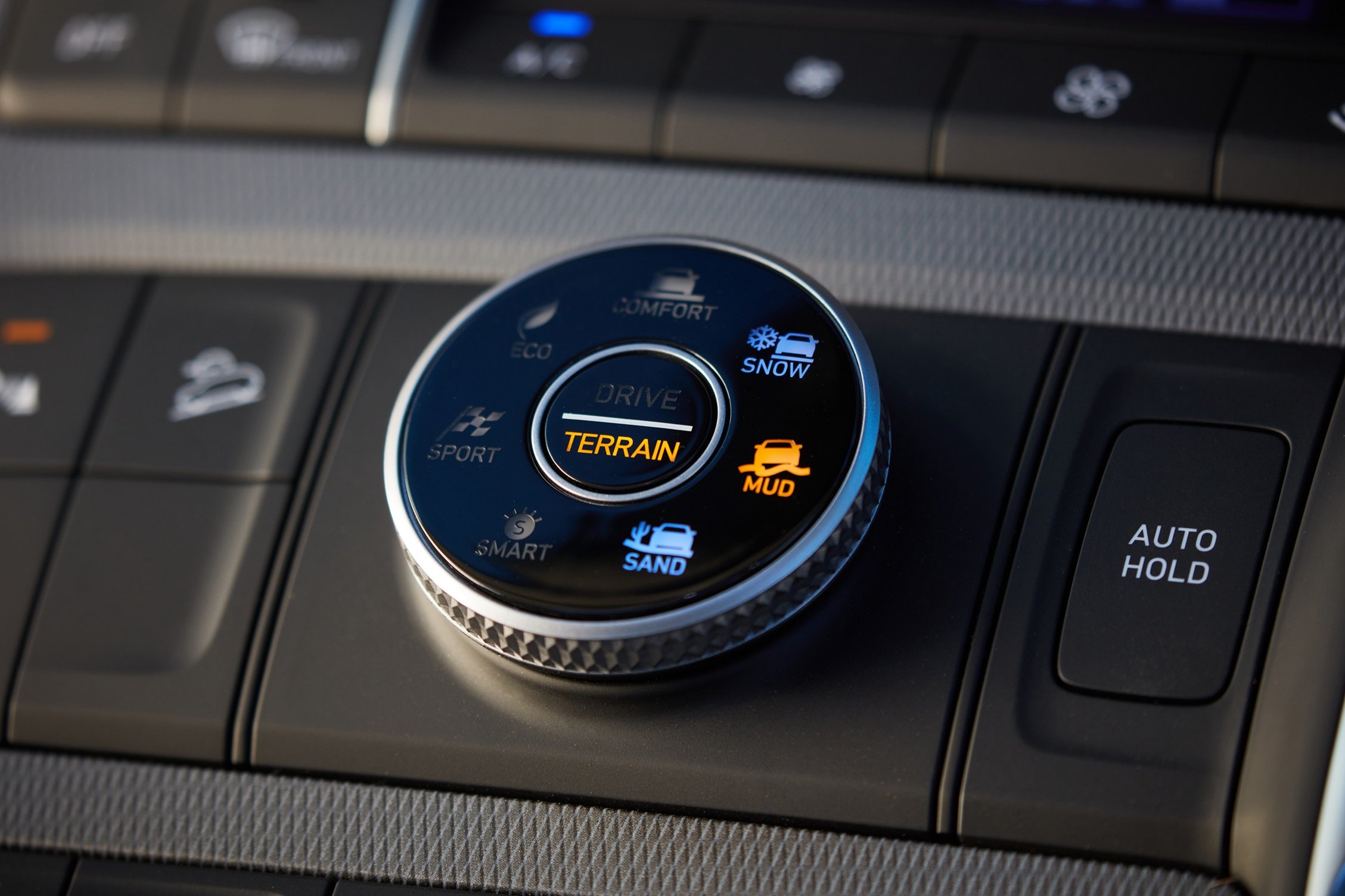
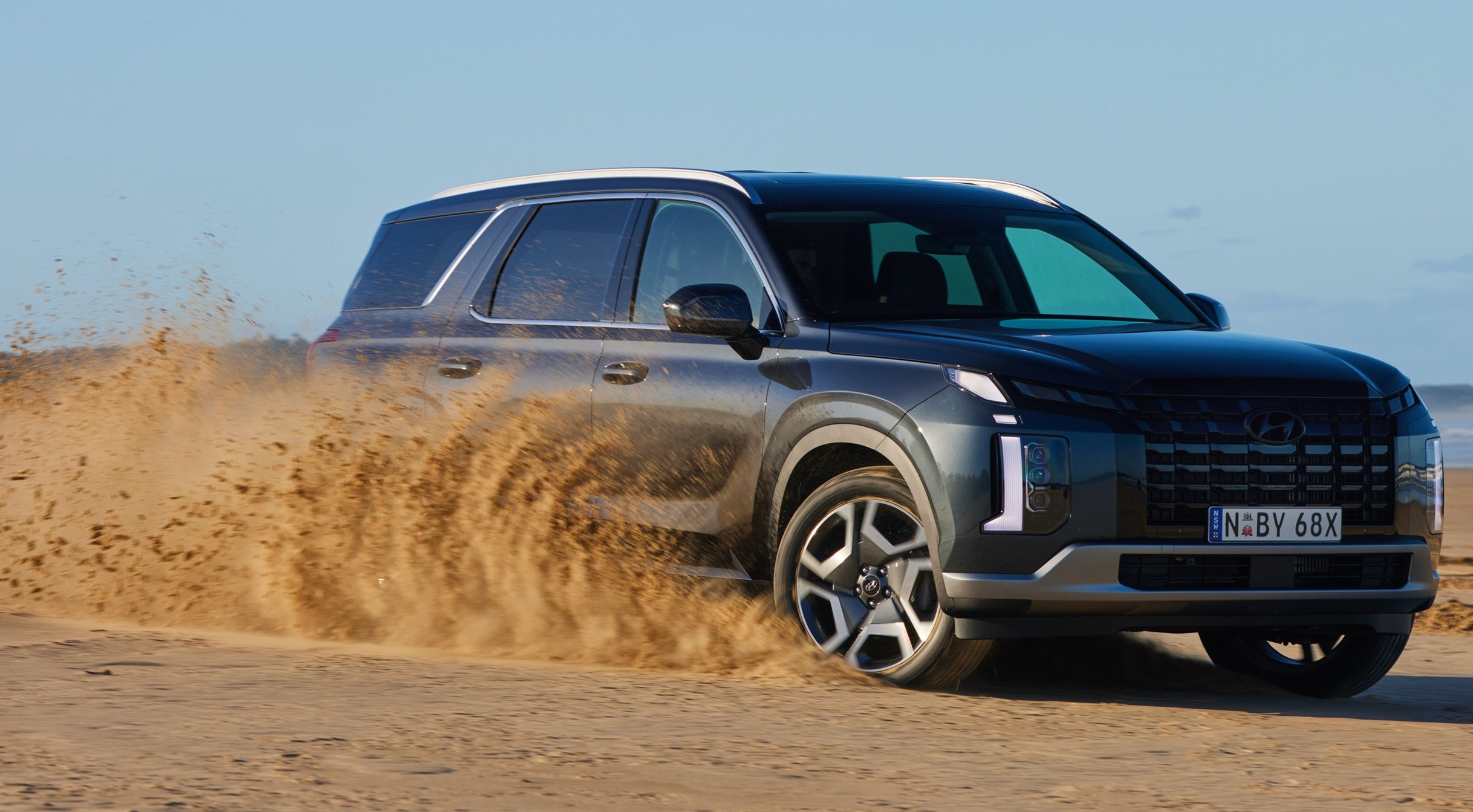

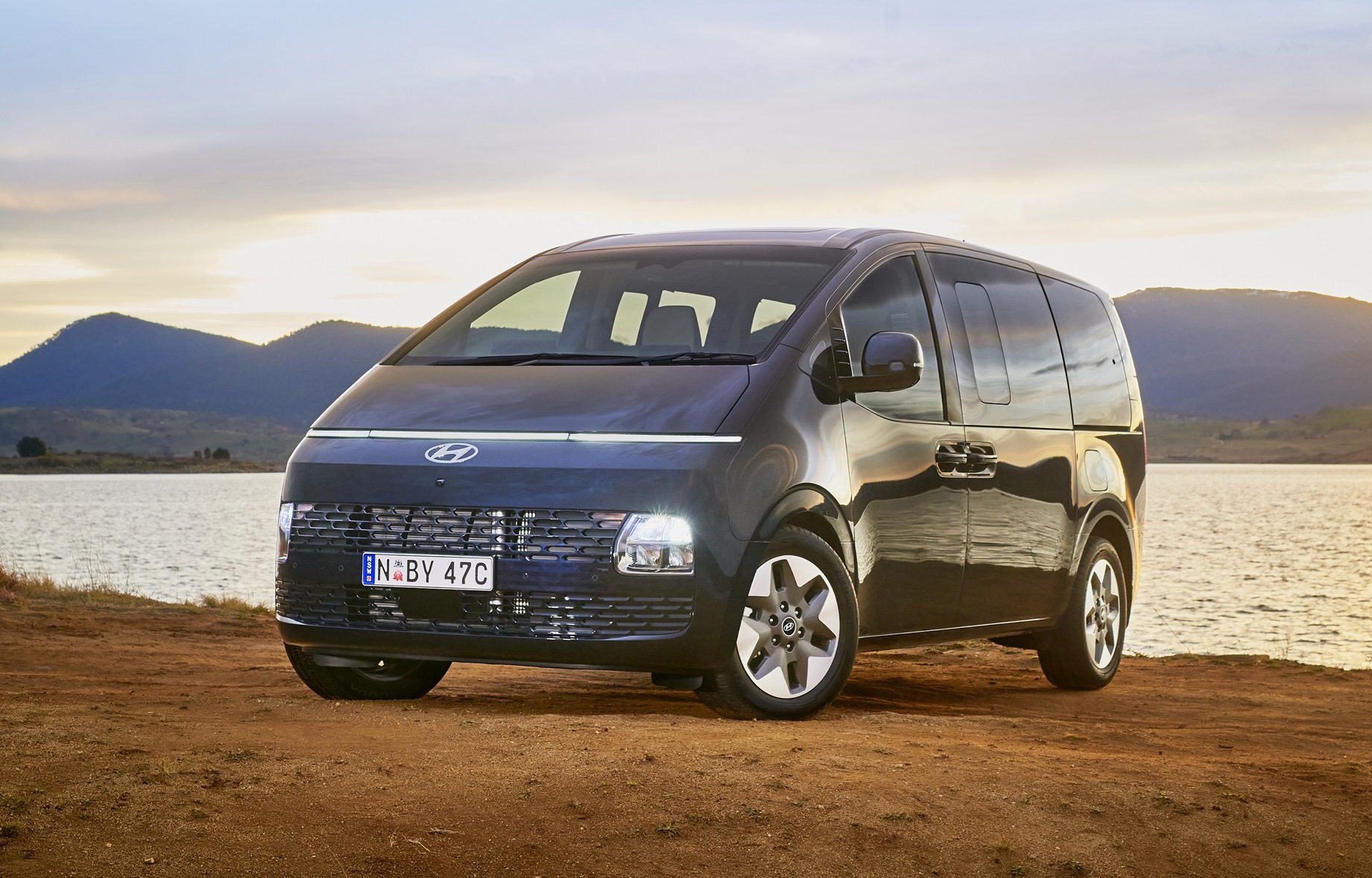
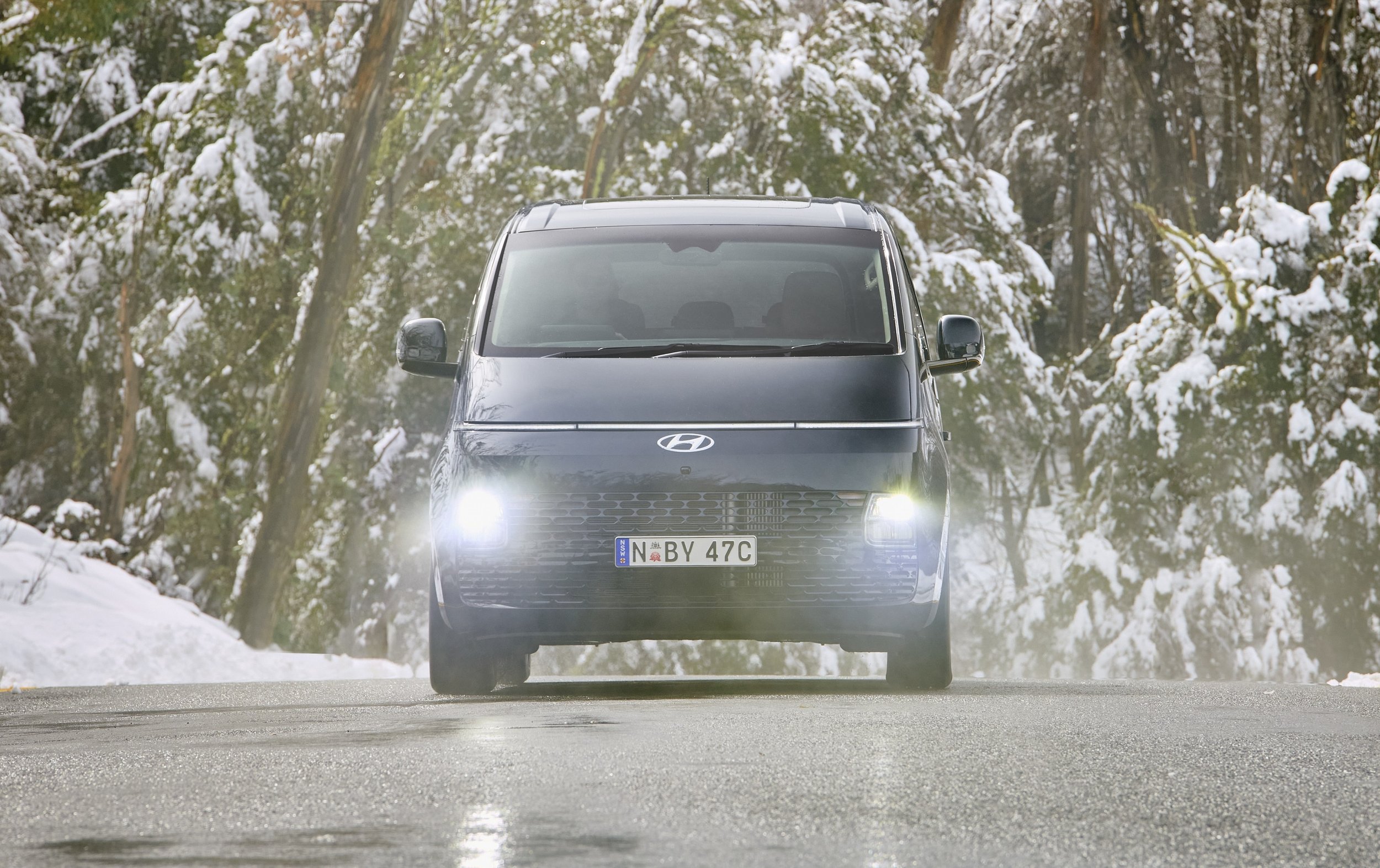

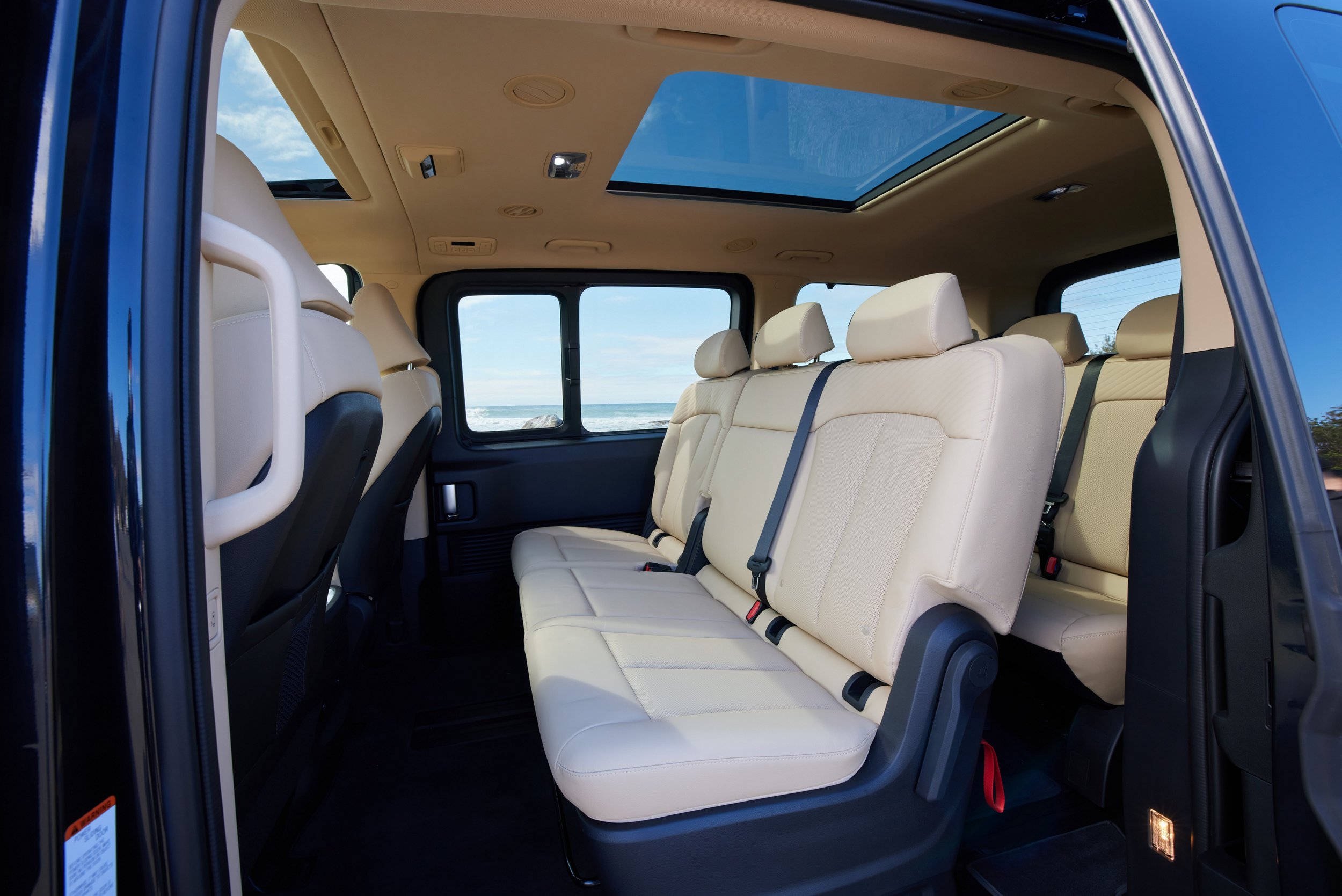
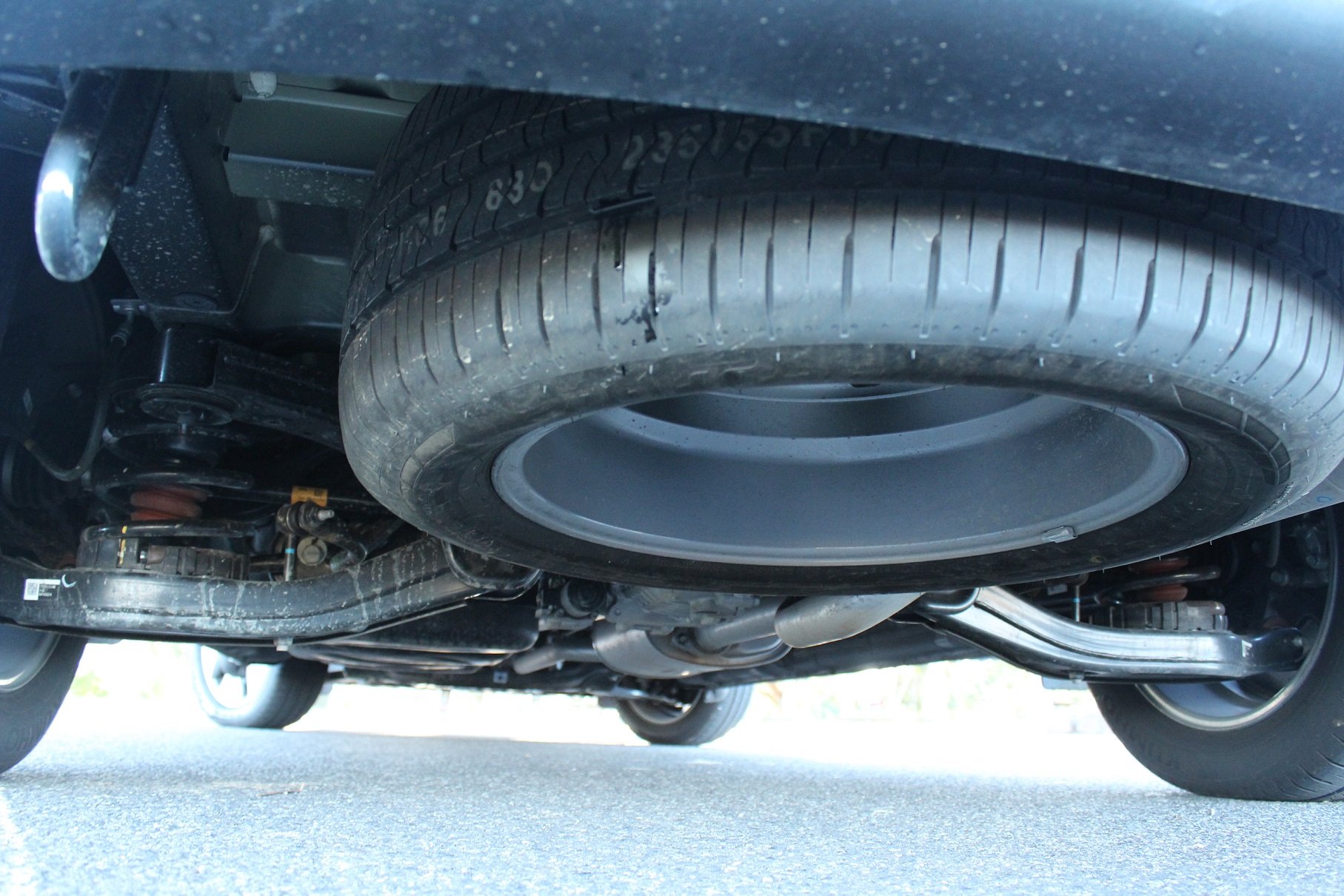
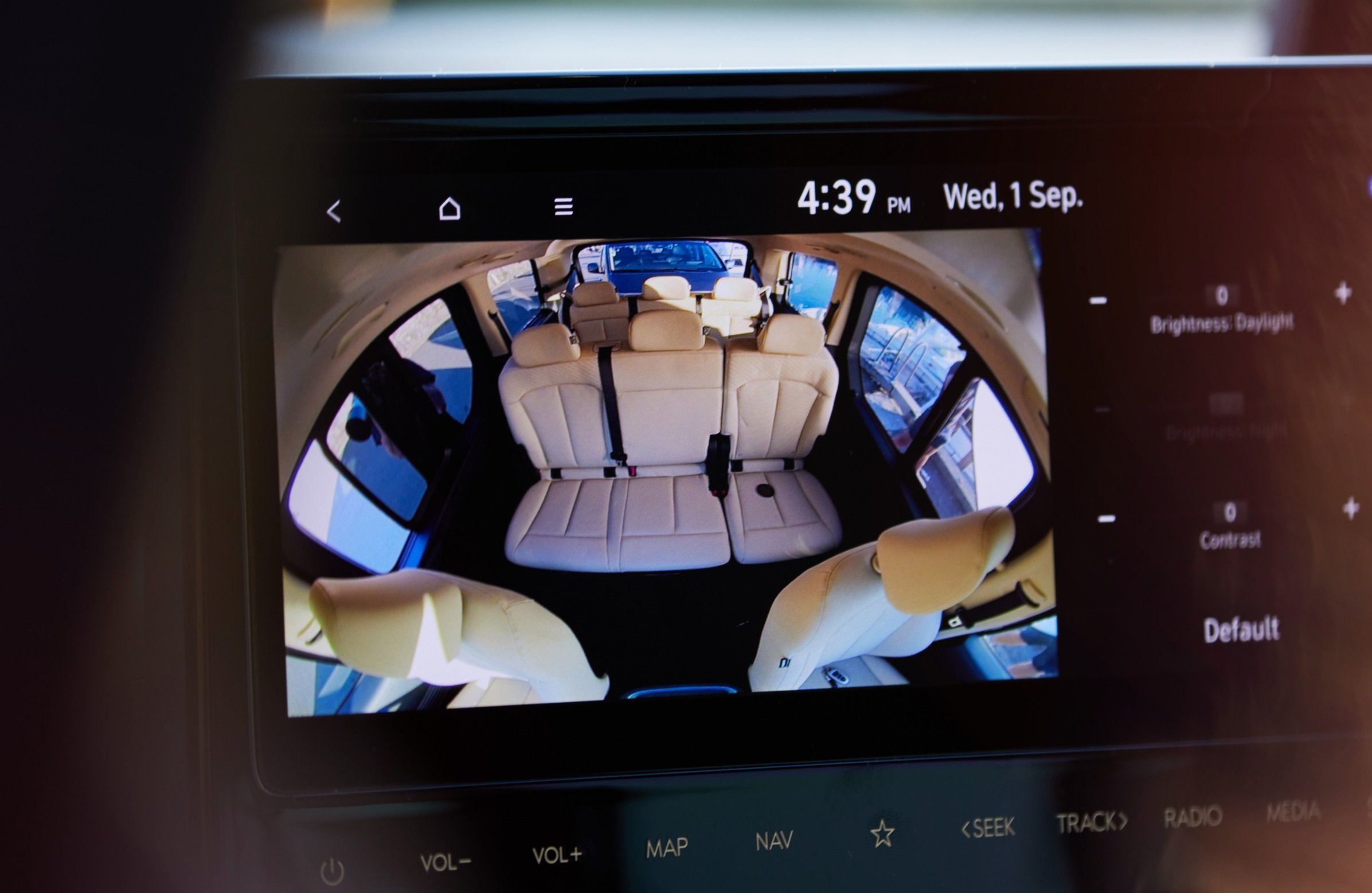





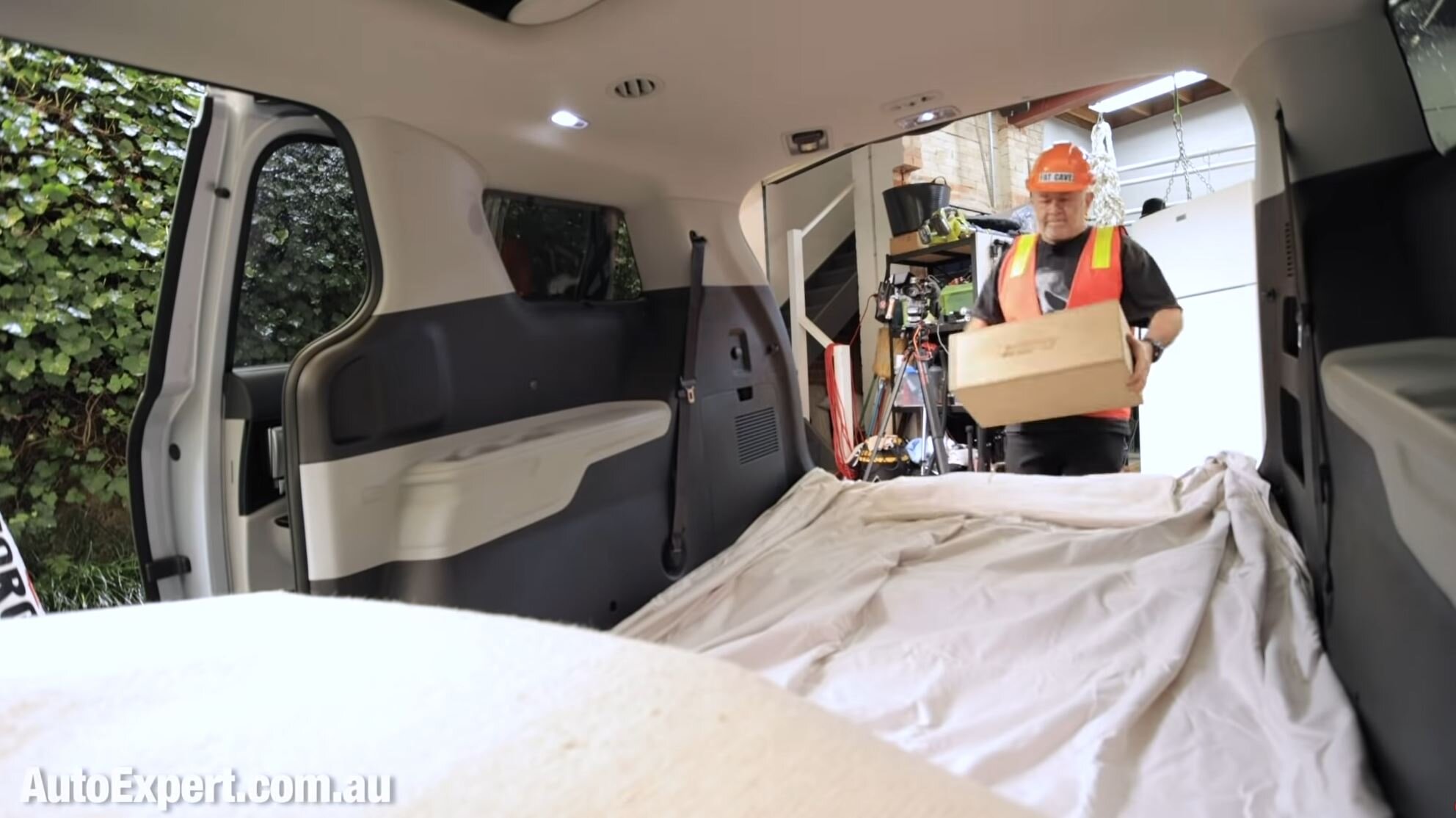
















The CX-60 combines performance, batteries and SUV-luxury to beat Lexus, Mercedes and BMW while Mazda refuses to go fully electric in favour of big inline six-cylinder engines. If your family needs lots of legroom, a big boot, and grunt, the CX-60 needs to go on your shortlist.